The year 2020 started so well and looked promising! At the travel agency where I work it was busy and me, I had a trip to Cuba to look forward to in May. But all changed when Covid-19 took over the planet. At work things got really hectic and I can tell you: not in a nice way! Cuba was rescheduled for October (when we still believed this whole situation would blow over soon), but cancelled once more a month before departure. At that point I was not even disappointed, I just wanted to believe that sooner or later all would return to normal. To me it was important that my family, friends and colleagues stayed healthy and at work I hoped that I would soon be able to do what I love to do: send people to the most wonderful holiday destinations!
During the summer months some destinations (within Europe and the Dutch Antilles) opened their borders for Dutch tourists and that lasted until half October; then most countries closed their borders once more. In the beginning of October, a promotional trip to Wroclaw (pronounce as Vrotsjlove), Poland was planned by tour operator De Jong Intra Vakanties. Poland is (still) open to tourism and instead of looking at what is not possible, this tour operator looks at what is possible in times of Covid-19. I registered, hoping I would be selected for this trip, simply because I love to travel and always want to explore new destinations. Knowledge is power; the more I know about a destination, the better I can inform my clients! Wroclaw is a city I would not have chosen to go to myself, but in the past, I have gone to destinations I did not have on my bucket list and these trips always turned out to be the most pleasant surprises!
I got selected, I am one of the lucky travel agents who gets to go to Wroclaw. The reactions of people around me were mostly positive, although some just did not understand why I want to travel in times of Covid-19. They almost made me feel guilty about wanting to travel, but I do not feel guilty. The tour operator always follows the travel advice of the Ministry of Foreign Affairs and I believe that we need to act responsible when travelling, even more during these times. Whether that is wearing a mouth cap, taking a test, keeping distance, washing and disinfecting your hands 10 times an hour, etc. Respect the rules when you travel and behave (always, Covid or no Covid)! I made sure that I did not see people for about 10 days before going on this trip and I will do the same when I get back.
Day 1: off to Wroclaw
Together with a small group of travel agents, tour operator representatives Sarena and Gitta and Magdalena from the Polish Tourism Organisation we are off to Wroclaw on Monday the 5th of October! We travel by KLM from Schiphol Airport around noon. We meet on time, just to be sure, although the airport really does not want you to show up too early. It is weird to be at Schiphol Airport when it is so quiet; although not as quiet as in April when I picked up my sister who got stuck in South Africa during her time as a volunteer. The airport then was a ghost town and really spooky.
I am excited, it feels so good to be able to do what I love most and that feeling when you get when being at an airport… it is the start of a new adventure! Our check in goes smoothly and I get myself some magazines and something to drink. Thankfully plenty of shops are still open and a coffee or tea to go is possible! Our flight leaves on time and believe it or not: the flight is actually fully booked. All passengers wear mouth caps, fill in the required forms, stay in their seats and a flight has never been so relaxed! We get a small snack and it is actually funny to see how careful people eat without making other passengers feel uncomfortable. Before we know it, we land at the airport of Wroclaw, since it is only about 1,5 hours flying from Schiphol. The airport of Wroclaw is modern and clean. We gather our luggage and go outside where a transfer bus is waiting to take us to our hotel PURO Wroclaw Stare Miastro, located only 10 kilometres from the airport.

PURO Wroclaw Stare Miastro is a modern, cosy and comfortable hotel and located perfectly, just outside city centre. The entrance is light and bright and so is the lounge area and restaurant, with its vibrant colours (both located on the ground floor as well). Upon arrival we check in straight away and normally we share rooms, but now we all get our own room. The rooms are beautiful, have comfortable beds, a safe, coffee/tea maker, hair dryer and a rain shower! We have a bit of time to freshen up before we meet for lunch.


The hotel has a spacious terrace outside, right next to the restaurant. A big table is set up for us, to have all the space we need to stay safe. We have heaters hanging over our heads and blankets are also provided to warm us up if necessary, but the temperature is mild. They serve us pumpkin soup, pasta and a chocolate desert. The first extra pound has already landed on my hips after only 2 hours in Wroclaw, but we will walk it off later ;)!
At lunch we meet Monika, our local guide during this trip and after lunch she hands us an audio system. With this system she can talk through her microphone and we can hear her through our ear plugs! We are going for a city walk and with this system we do not intrude on locals and other visitors doing their thing and also, we can keep a safe distance from one another and still hear all she has to say! For me, this system is really perfect, because I cannot stand still (having a tiny foot problem) and I always wander off for photographs.
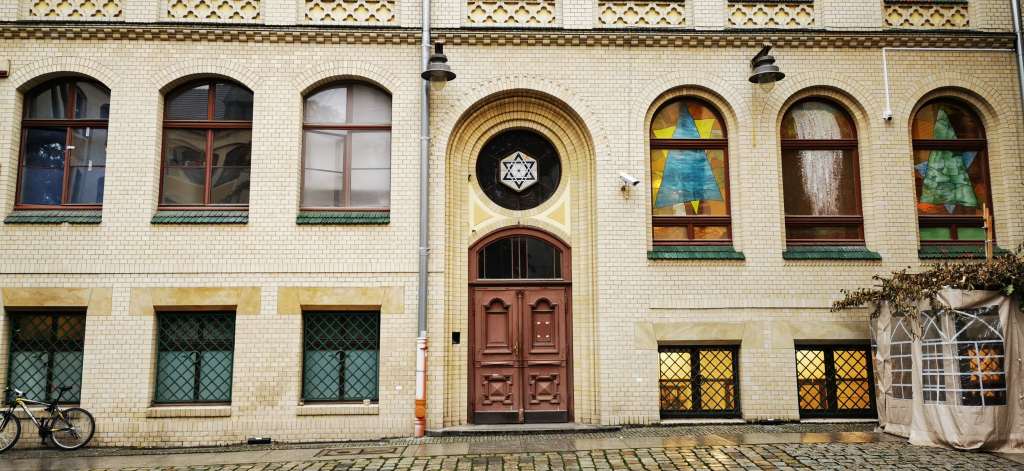
Unfortunately, it starts to rain, but that does not spoil our fun; it is only a drizzle, so not too bad. Monika speaks perfectly Dutch, so in our own language she guides us through the city. Close to the hotel is The White Stork Synagogue and from there we walk towards The Market Square. During our walk we see dwarfs (or gnomes… what is the difference between the 2?); they are everywhere in the city and come in various “outfits” and with various “accessories”! No, we did not have too much wine during lunch, we really see dwarfs! Wroclaw is famous for its dwarfs and they have their own festival in September! We try to spot them all, which is impossible, but Monika points them out and they are probably the most photographed attractions of the city!

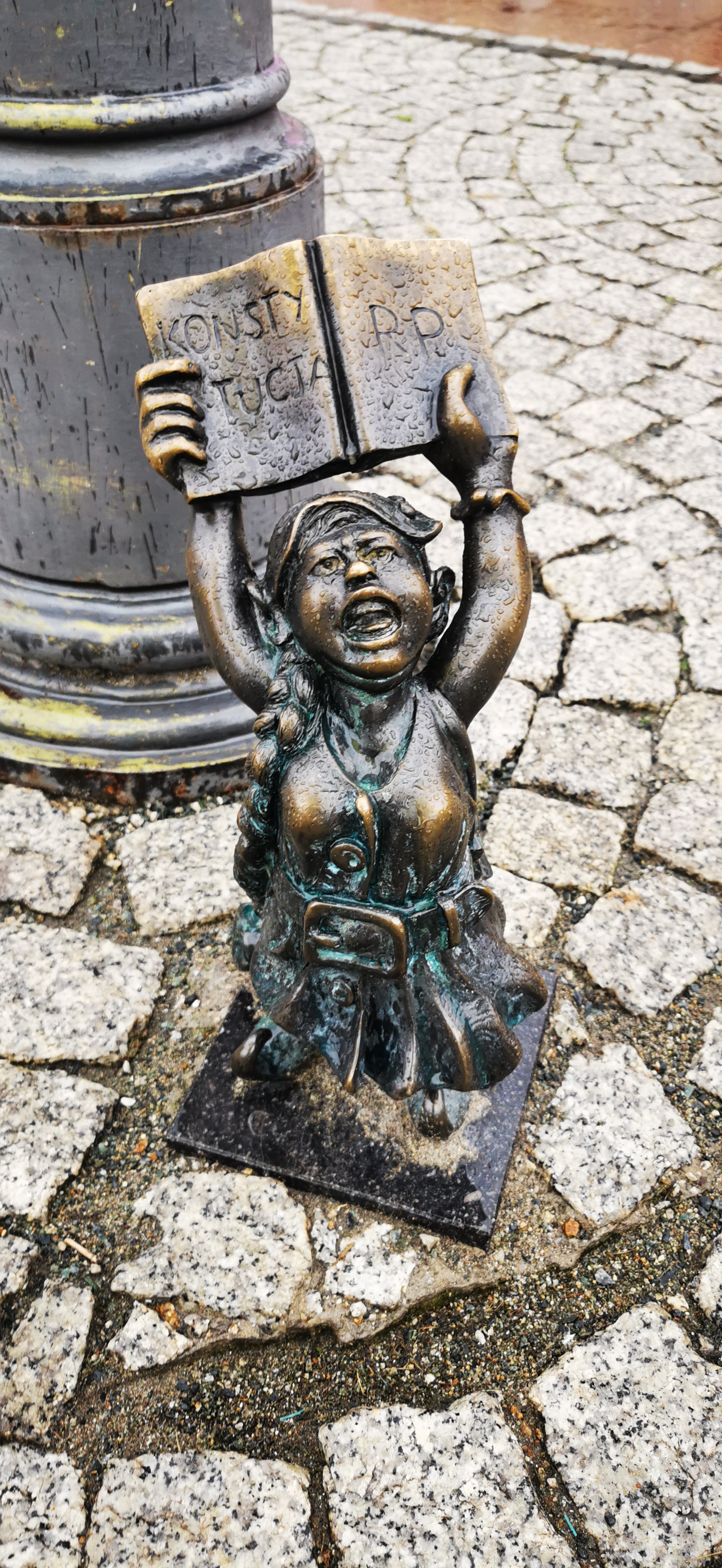
Wroclaw (also known as Breslau) is the historical capital of Silesia, but also a university city and the 2 go really well together. As we walk, we see an interesting mix of old and new, young and old(er). You can admire the most beautiful historical buildings like the Town Hall, while enjoying the modern world that lies in between history (think about hotels, bars, restaurants, shops, etc.). The Market Square is the centre of the city and very picturesque with its colourful buildings; hopefully we will come back when the sun is out, so we can take better photographs.
We go back to the hotel to freshen up again and change clothes, before returning to city centre by foot. The location of our hotel is really perfect and the bit we walk is necessary to be able to enjoy another meal. Tonight, we are going to restaurant La Maddalena, located on a tiny island in the Oder river. The river runs through the heart of the city and can be crossed by its many bridges; the bridges are an important part of Wroclaw’s identity. La Maddalena is an Haute-Cuisine restaurant and they serve us the most delicious dishes; what a treat! We listen to live music and from the restaurant we can enjoy the view over the Oder and the University that lies on the other side. The dessert is a show stopper and the most delicious and beautiful eclair I have ever eaten. What a night!
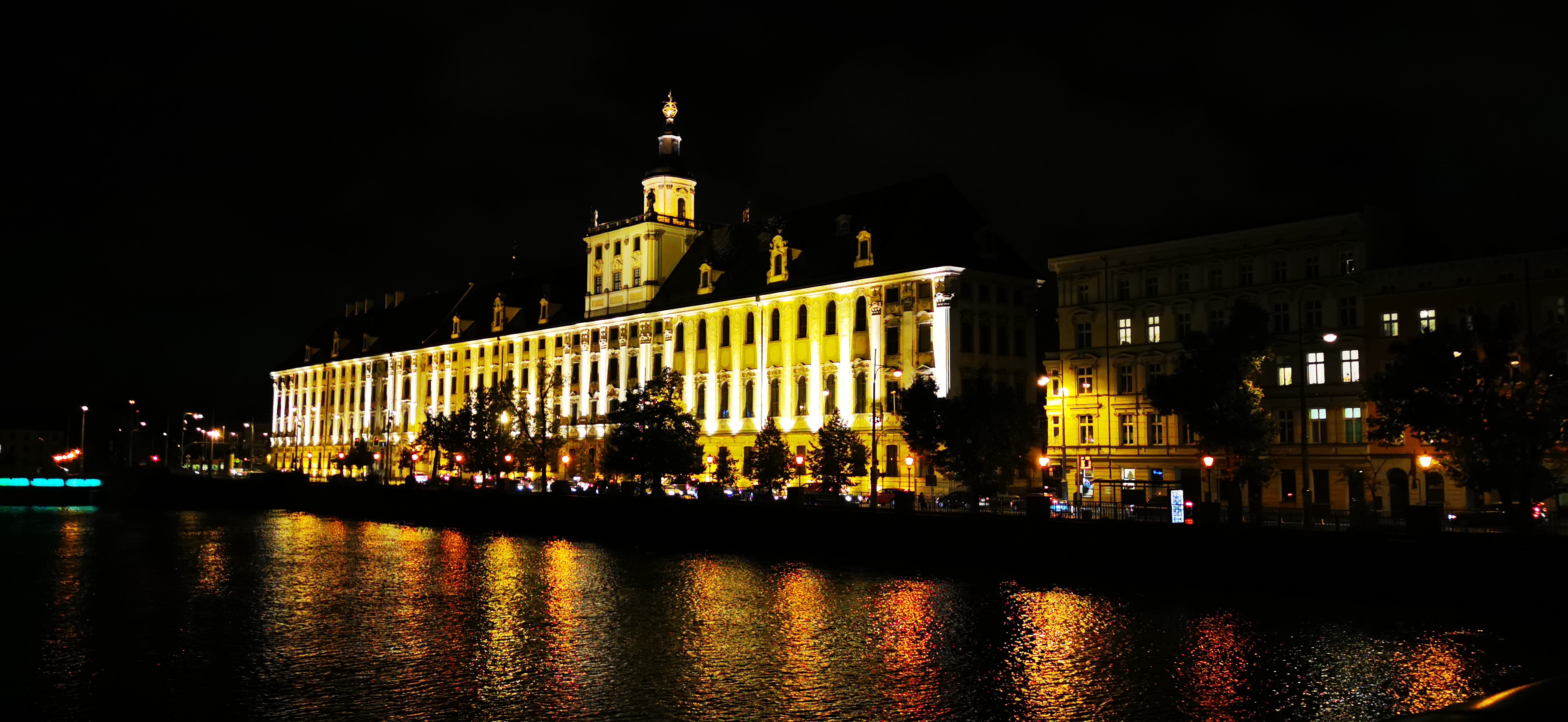
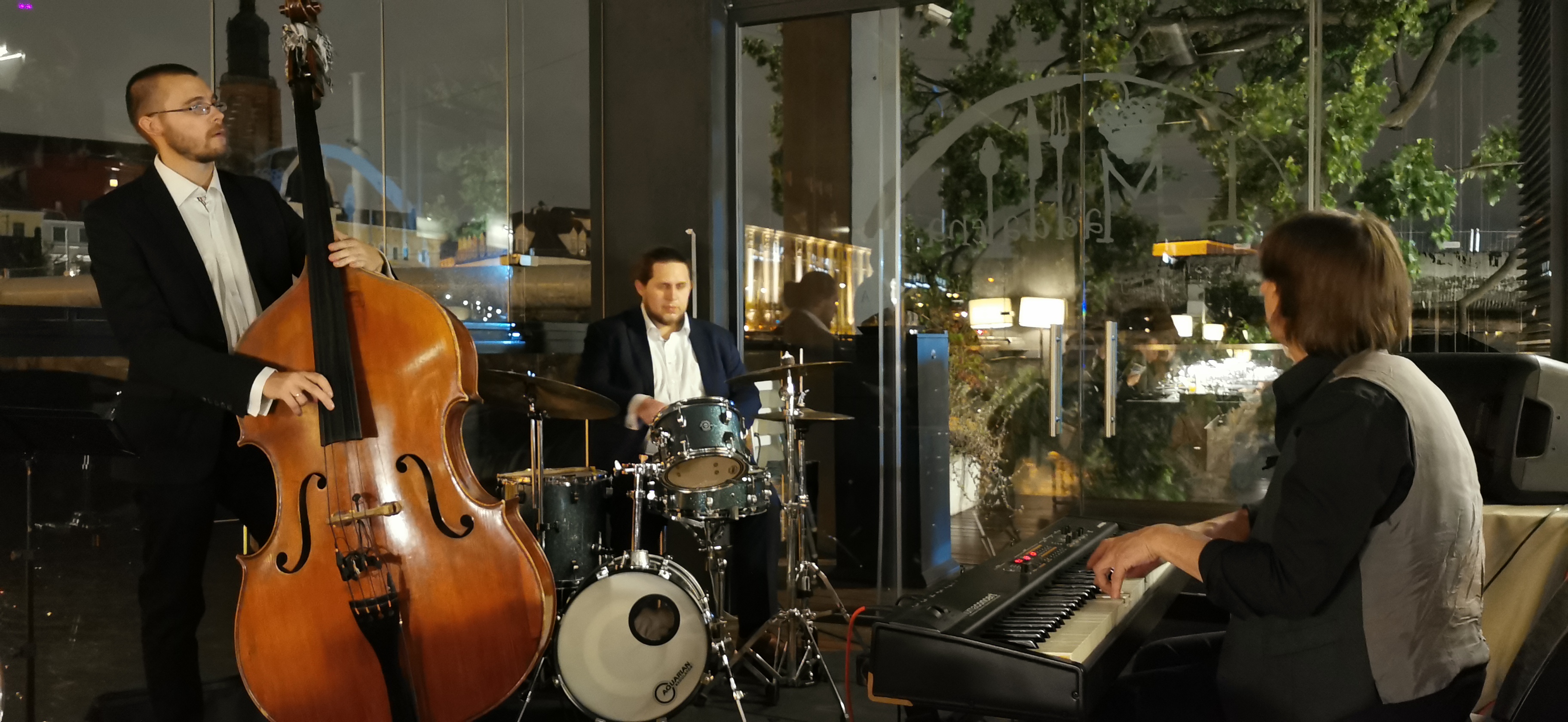

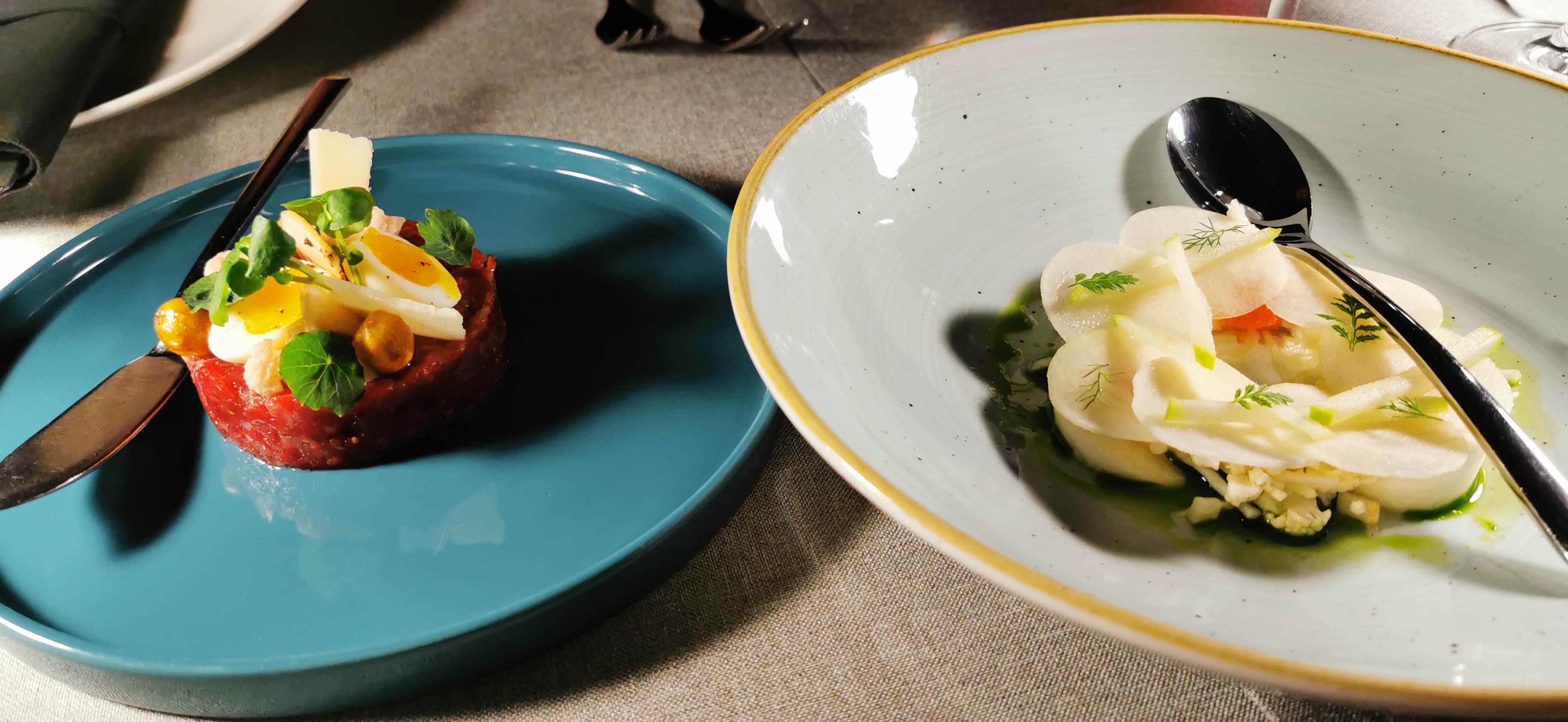
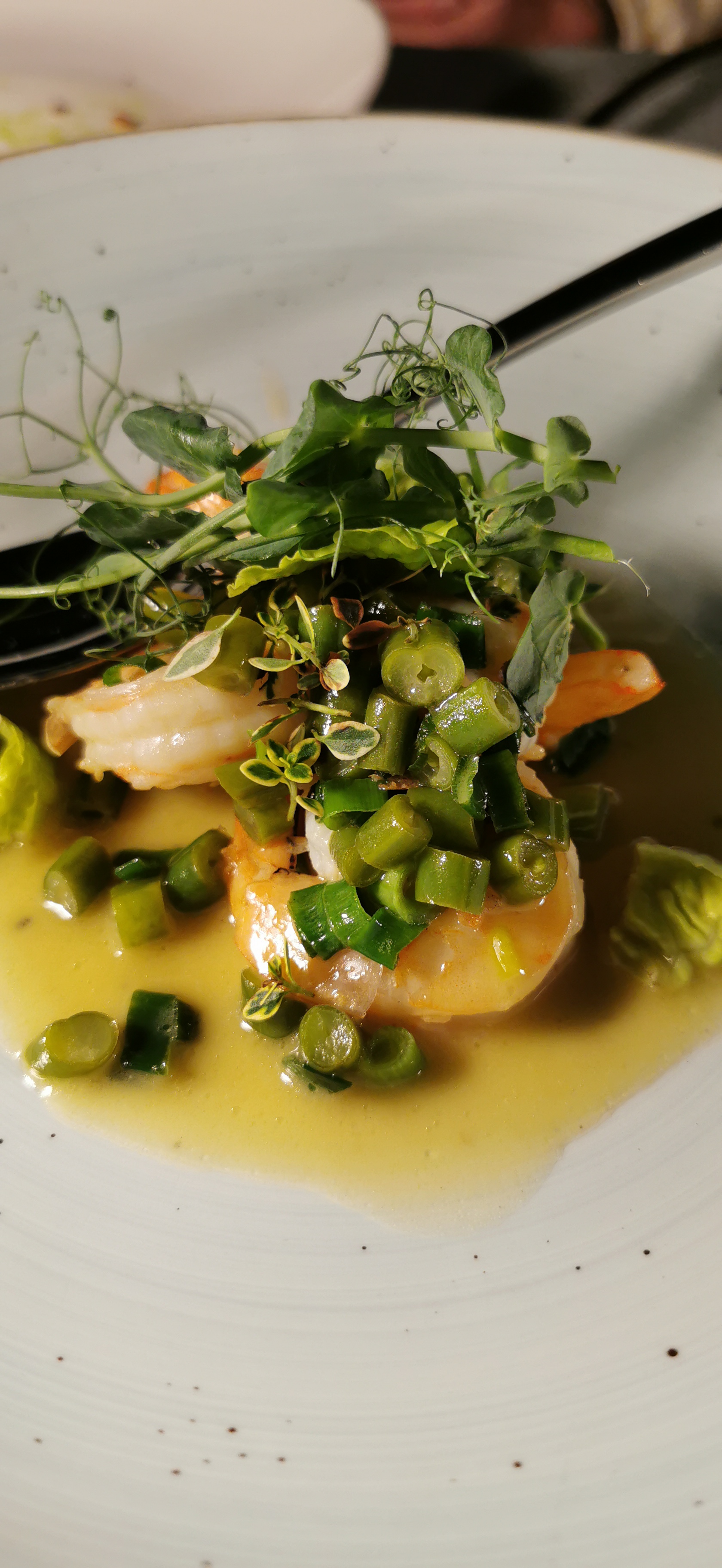
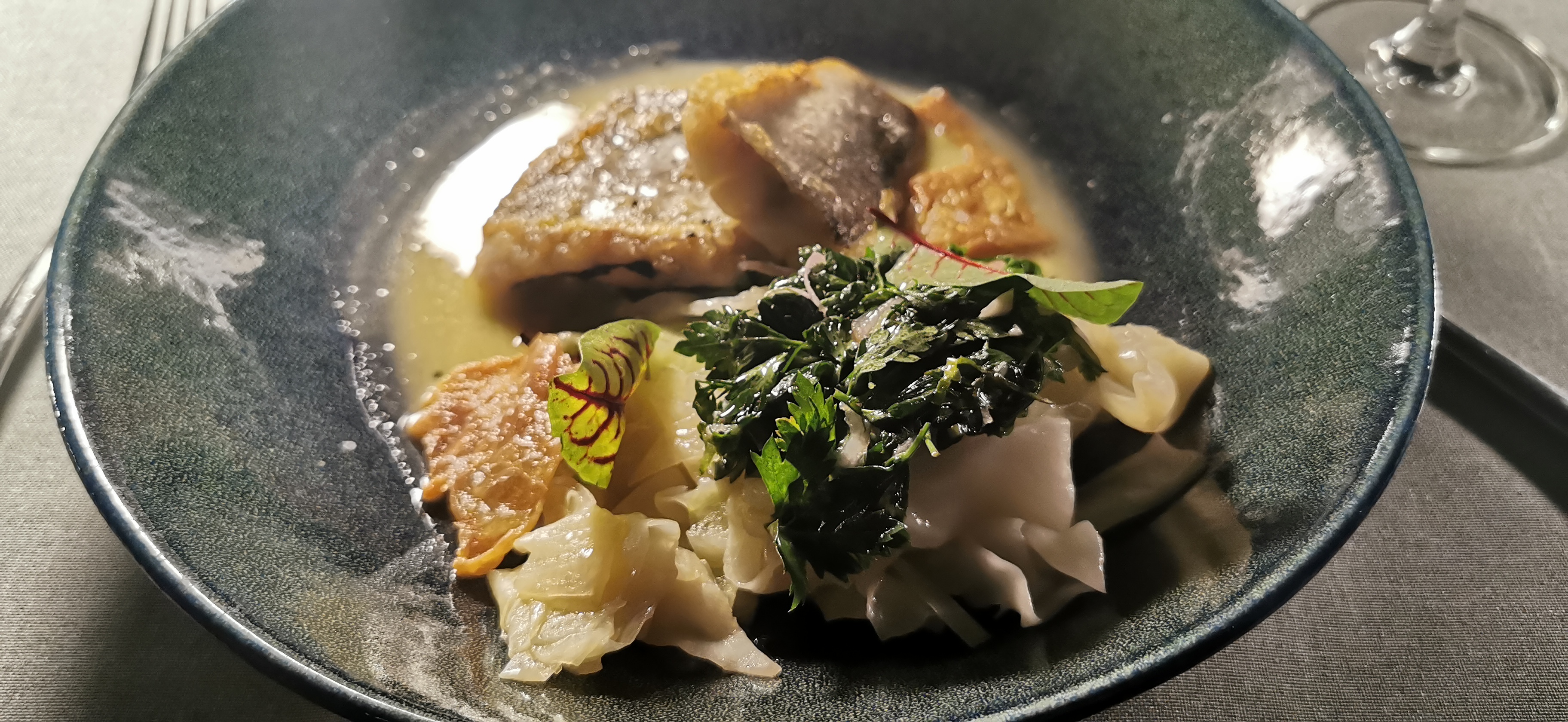

Day 2: Zoo, Centennial Hall, Japanese Gardens, Hydropolis and Dom island
Breakfast at the hotel is another treat. I am so glad they do not serve stuff like cakes, donuts and cookies. You can eat a healthy breakfast and there is plenty to choose from (warm dishes, yoghurts, quinoa, smoothies, croissants, etc.)! The restaurant staff pays a lot of attention to hygiene and make sure the guests can follow the regulations. After breakfast our transfer bus is waiting for us in front of the hotel. It feels like we are going on a school trip, we are excited about what awaits us today. Wroclaw has a lot to offer and not just in city centre and that is why we need the bus!
Our first stop is at Wroclaw Zoo, the oldest zoo in Poland; its doors opened in 1865. This zoo is really unique, having the largest number of animals in a Polish Zoo, over 1100 species! In 2006 new director Radosław Ratajszczak initiated an extensive programme of investments and new pavilions and enclosures were built. We visit the Africarium, where the director himself guides us though an oceanarium, specially designed to feature the fauna of Africa, which opened in 2014. We use the audio system that Monika gave us yesterday. We see species like sharks, rays, manatees, crocodiles, hippo’s, mousebirds, ibises and hornbills. Of course, there is much more to see at this zoo, but we are going to move on to our next stop. During trips like the idea is try to see a bit of all the destination has to offer and if we feel like there was not enough time and we want more, we can always come back!

Our next stop is a truly unique project within Europe: Hydropolis Centre for Ecological Education. Hydropolis is a science centre dedicated to water and everything starts with water on this planet! Upon arrival we get gloves so we can safely use the interactive parts of the exhibitions. A young man guides us through Hydropolis, also using Monika’s audio system; our time is limited but he explains as much as possible and it is very interesting! Hydropolis uses a variety of technologies and that way they teach us visitors about the role of water in the environment, its importance to humans, and the history of human interactions with water. I love this place, water is such a big part of my life, living by the sea. Hydropolis is popular and booking in advance is recommended!
It is time to have lunch and we do so in style at Restaurant Gran Cru, located in the luxurious 5* Grape Hotel. This hotel is a renovated 19th-century villa and offers 13 uniquely furnished rooms, whose character and design resemble and identify with the most famous wine regions from Europe and the world (my kind of place). Apart from the beautiful rooms, the hotel offers a 24-hour sauna, spa centre and restaurant with its own wine library. We are served another delicious meal, with local, seasonal products and matching wines. I could easily stay here for a few days, although I would gain a few more pounds for sure. The hotel is surround by a lovely garden and its locations is close to highlights like the Zoo, Hydropolis and Centennial Hall.
At some point we need to move on and we leave Grape Hotel behind us. Our bus takes us to Cathedral Island (Ostrów Tumski), the oldest part of Wroclaw and close to city centre. This part of Wroclaw with its rich history has a lot to offer and walking through this part of the city is such a pleasure. Monika tells us the most interesting stories of the history of Wroclaw, which started over 1100 years ago. We see Gothic and Baroque architecture: The Cathedral of John the Baptist, Church of the Holy Cross and other ancient churches of Wroclaw like St. Giles and St. Martin. Of course, dwarfs are also found on Cathedral Island and it has become a sport to spot them. At the end of the day, when it gets dark, you can see the 103 working gas streetlights being lit. We leave at the end of the afternoon, but I can imagine it attracts a lot of people.
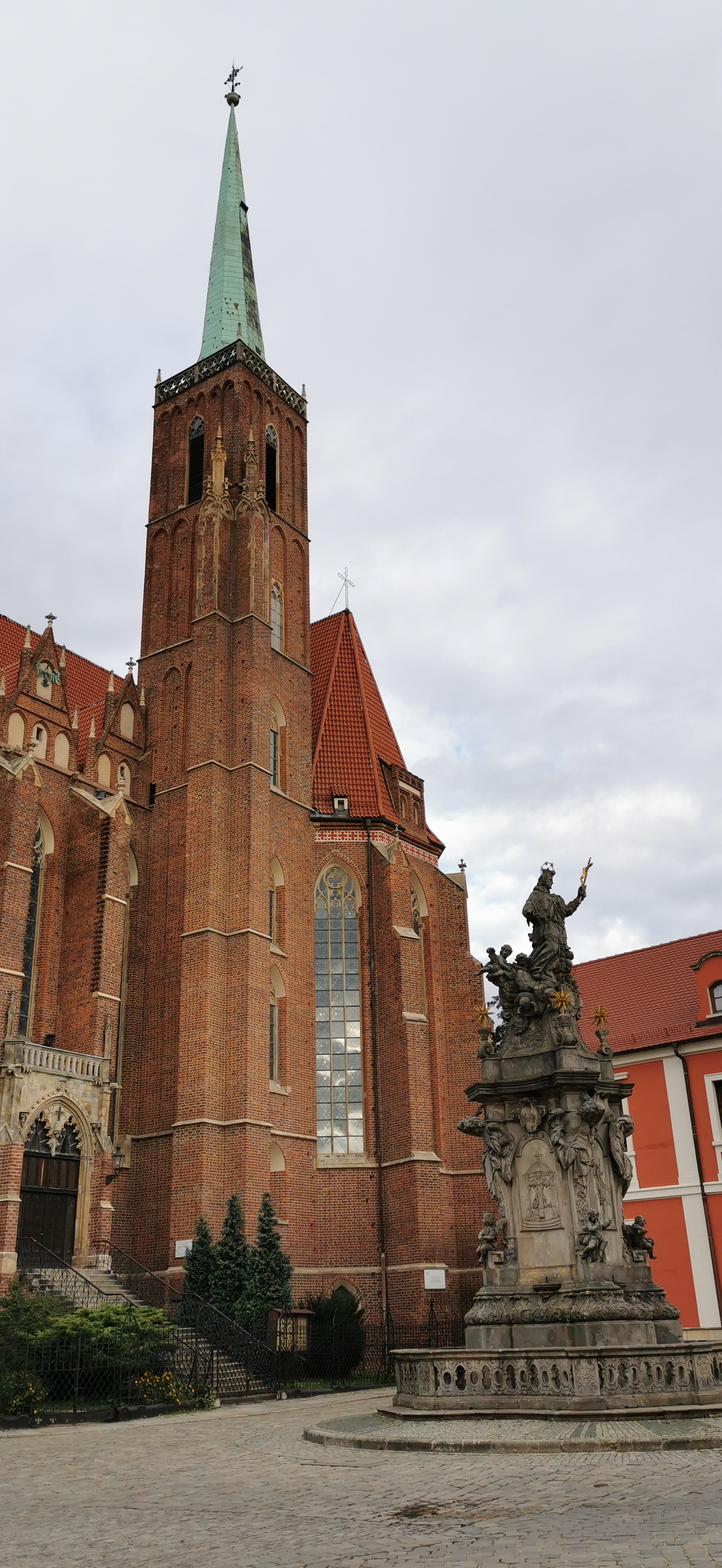



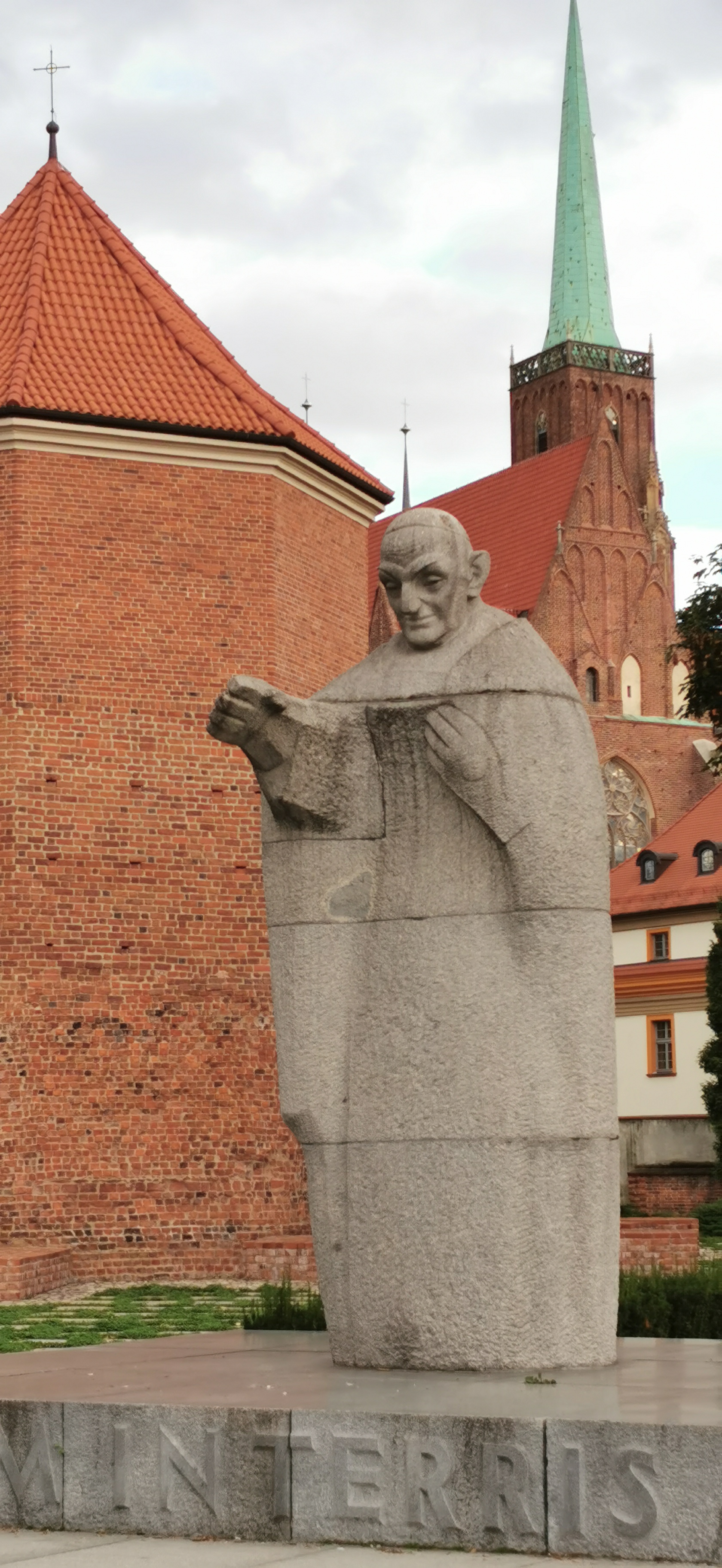
The transfer bus is ready to take us back to the hotel, where we will have dinner tonight. But since we have a bit of time left, half the group decides to walk back. The weather is beautiful today and walking is the best way to see more of Wroclaw. We cross the Mlynskie bridge (Mosty Młyńskie), quickly visit the Roman Catholic parish church NMP on the Sand before crossing the beautiful red Sand Bridge (Most Piaskowy) over the Oder river. We stand still on the bridge for a minute; the view is amazing. When being on a city trip I have learned I need to stand still now and then, since I am always running, trying to see as much as possible. Autumn colours, the Oder and Cathedral Island paint a pretty picture and we need to take it in and remember this view!
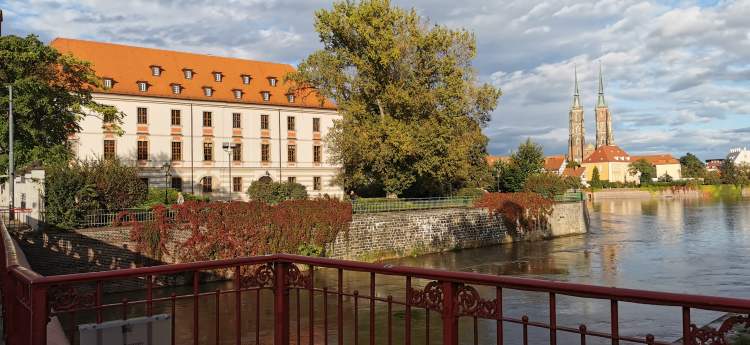
We walk towards Market Square, pass by a naked lady bathing in the Oder and visit St. Matthew Church. At the end of the afternoon, we find ourselves a place to sit down for a warm drink (yes, an alcoholic one!).

Back at the hotel we freshen up and change. Tonight, we have dinner in the hotel restaurant and again the weather allows us to sit outside on the terrace, where we have plenty of space. We all have blankets and heaters over our heads to keep us warm. We listen to a small presentation before our starters arrive. Sarena tells us about the new program for 2021 and we all hope that by then things will have returned to “normal” as much as possible and that our clients our able to travel again. We realize that it travelling is seen as a “luxury”, but travelling is so much more than that. It teaches us so many things, it makes us rich simply by experiencing other “worlds”, cultures and customs (and more). It is time to eat; I have a delicious avocado with poached egg as a starter and a beef bavette as main course, accompanied by a glass of wine. It is the end of day 2 and more and more we are relaxed and able to leave our worries behind for a while.
Day 3: Gross-Rosen, Osowka, Książ Castle and Peace Church Swidnica
The alarm clock goes off very early, at 6:00 am to be exact. I am really not a morning person, but today we will leave the city behind us to explore more of Lower Silesia and we need as much time as possible. There is quite a bit on the program and it takes about an hour and 15 minutes to get to our first stop. So, after another good breakfast our bus awaits us and after about 15 minutes, we have left the city behind us. Our guide Monika keeps us awake and tells us a lot about “her” Wroclaw, about things we see along the way. It is unbelievable how good her Dutch is and all her stories are interesting to listen to! She also speaks about the history and big influence of the Germans in Wroclaw and Poland and the destruction during the war. We will see a part of this history today.
As soon as we leave the city, we drive through a spacious, green, hilly area, passing by small villages where time seems to stand still. Our first stop is an important part of history; a part that must never be forgotten! We arrive at Gross-Rosen, close to Rogoznica. It is a former concentration camp, established in 1940 as a subcamp of concentration camp Sachsenhausen. Until February 1945, Gross-Rosen was hell on earth for over 120,000 prisoners and about 40,000 people were killed here. At the entrance of the museum Monika meets 2 local guides and hooks them up on our audio system. The group is divided in 2 smaller groups and a lovely, young lady takes us to the gate of the camp to guide us around.


We walk through the original entrance gate which has 2 (original) guard houses. Just seeing the barbed wire makes me shiver. The camp looks very peaceful right now, the sun is shining, no wind… but you can feel the horror of this place. Our guide tells us that during the war there was no green grass as we can see it now; the prisoners would eat it, not getting enough food or any food for that matter. We visit all that is preserved in this camp: the camp bell, foundations of barracks and for me (and the other ladies) it gets emotional when we stop at the death wall and the mobile crematorium. I have to concentrate on what our guide is telling us, because seeing the crematorium is so impressive.
Close to the crematorium is a memorial and inside are remains of bodies found on these grounds. As we walk down towards the reconstructed barrack, a deer is walking in front of it and puts a smile back on our faces. Inside the barrack we get an idea of how the prisoners lived and then we walk back to the entrance. We have spent an hour in the camp, not long enough and there is no time to visit the museum; but I am grateful we came here. Every year at home in The Netherlands, on the 4th of May, we remember victims of various wars and that should never stop, so that we never forget!
We move on and after a short ride we arrive at Osówka, in the Owl Mountains. It is an underground city with a huge system of concrete corridors, halls and fortifications. We are welcomed by the director himself and Monika acts as his translator. Before we enter this mysterious, underground city, we are handed plastic caps, helmets and gloves to wear, before we can enter. Of course, we wear our mouth caps as well. Almost completely covered we enter Osówka.
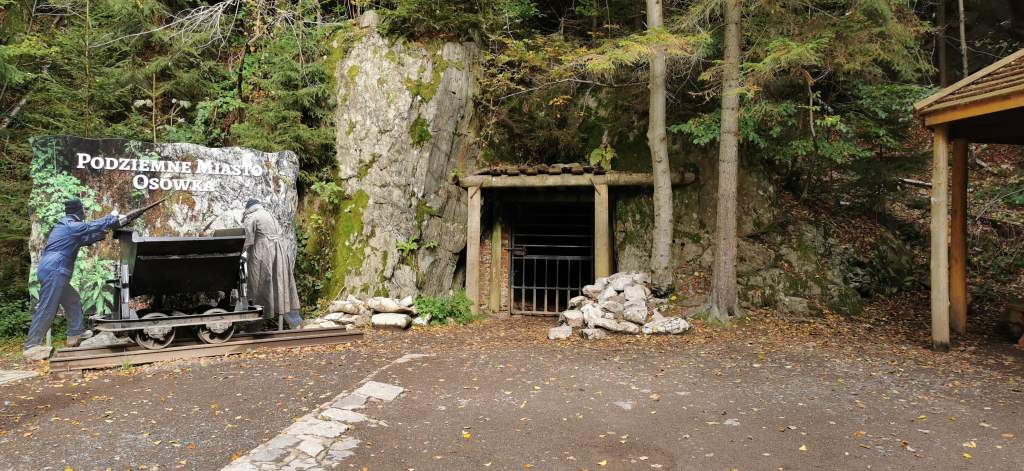
Osówka is built by the Third Reich, as part of the RIESE (Olbrzym) project. This impressive, underground city was built on a large scale in 1943, by workers and prisoners from the Gross-Rosen camp. Their working conditions were horrible; they were forced to dig from 1943 to 1945, many of them not having proper tools and even having to use their hands. Many prisoners would not live to tell! More than two kilometres of tunnels were dug. We walk about 1 kilometre, get to see images and found items along the way, while we listen to the stories.
The war was too short to complete this secret project, which some say should have become Hitler’s headquarters. Others believe that it was the idea to make secret weapons here, since areas like the “Gym” and “Casino” are big enough to store massive weapons. One can only guess the truth; the project was so secret, workers died and all documentation has disappeared.
We exit the underground city through its back door and a path takes us back through a beautiful, green forest to the restaurant, close by the entrance. The director thanks us for visiting, but we have to thank him! So far this morning we have learned a lot about history and I consider these visit valuable lessons in life. In the restaurant we get served a true Polish lunch, with delicacies such as pumpkin soup, Barszcz (beet-based soup) and Pierogi (dumplings filled with sauerkraut and mushrooms and others with spinach).
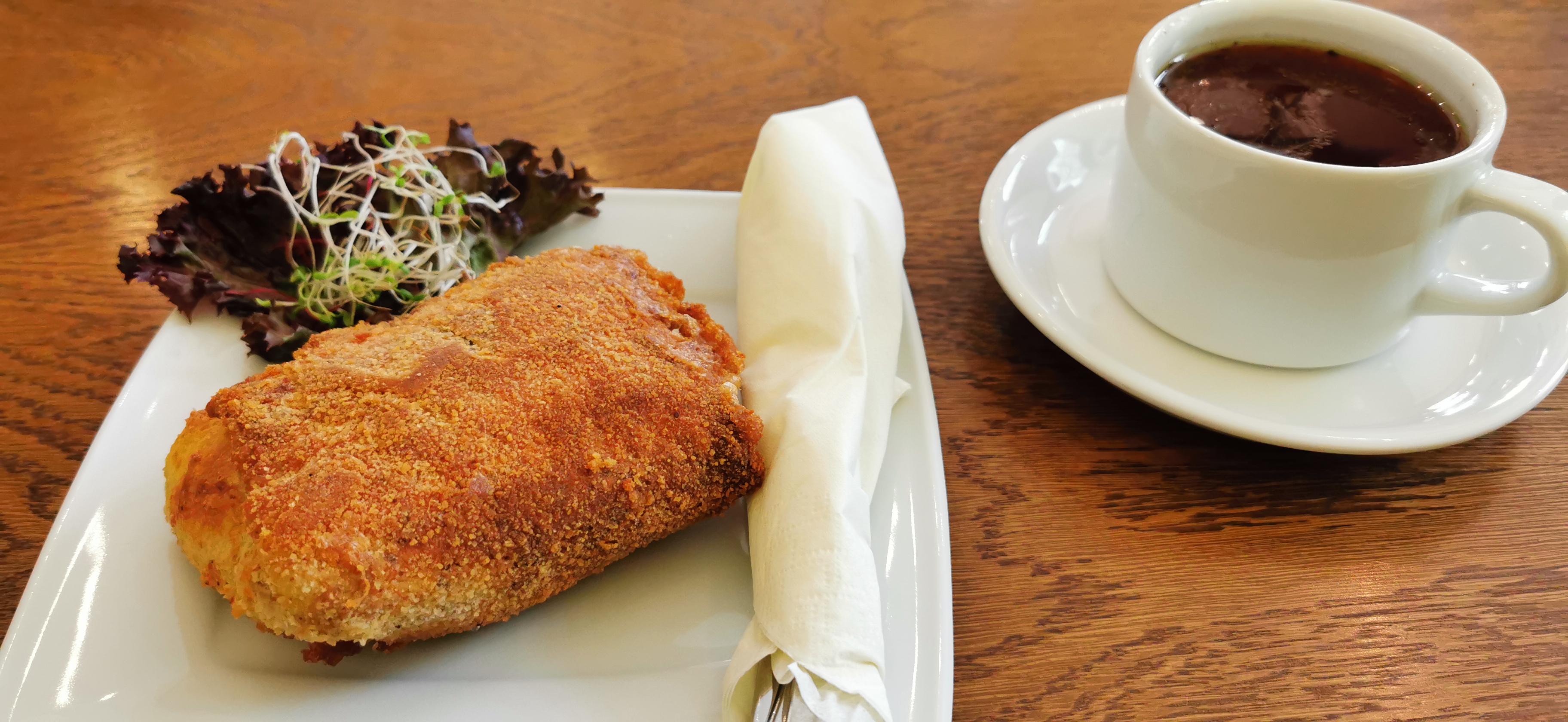

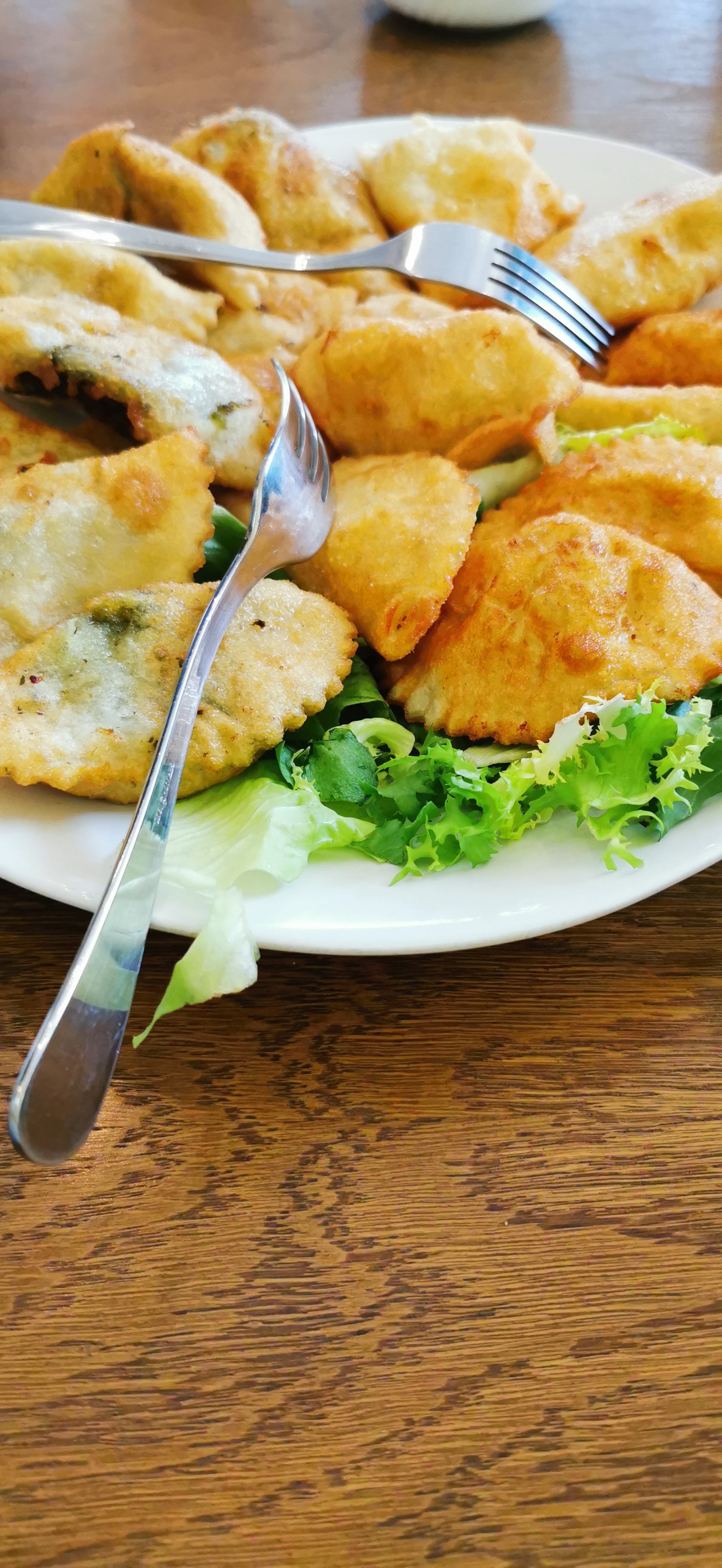
After lunch we head to Książ Castle, the largest castle in the Silesia region and third largest in Poland, located in northern Wałbrzych. From the parking lot we have to walk for a little while and first we stop at the viewing point to admire the impressive castle from a distance! It looks like it comes straight out of a fairy tale. After taking lots of photographs, we walk towards the entrance and into another important part of history.
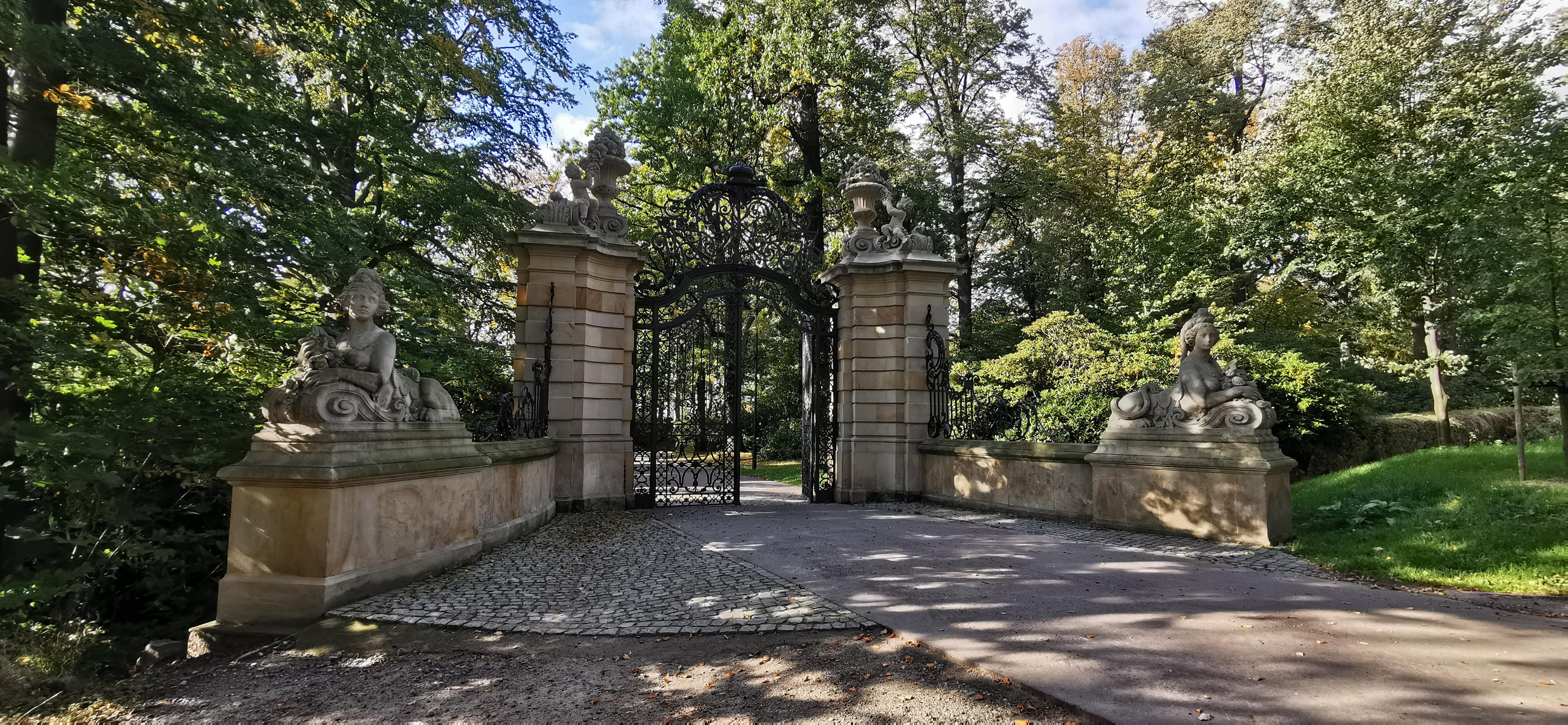

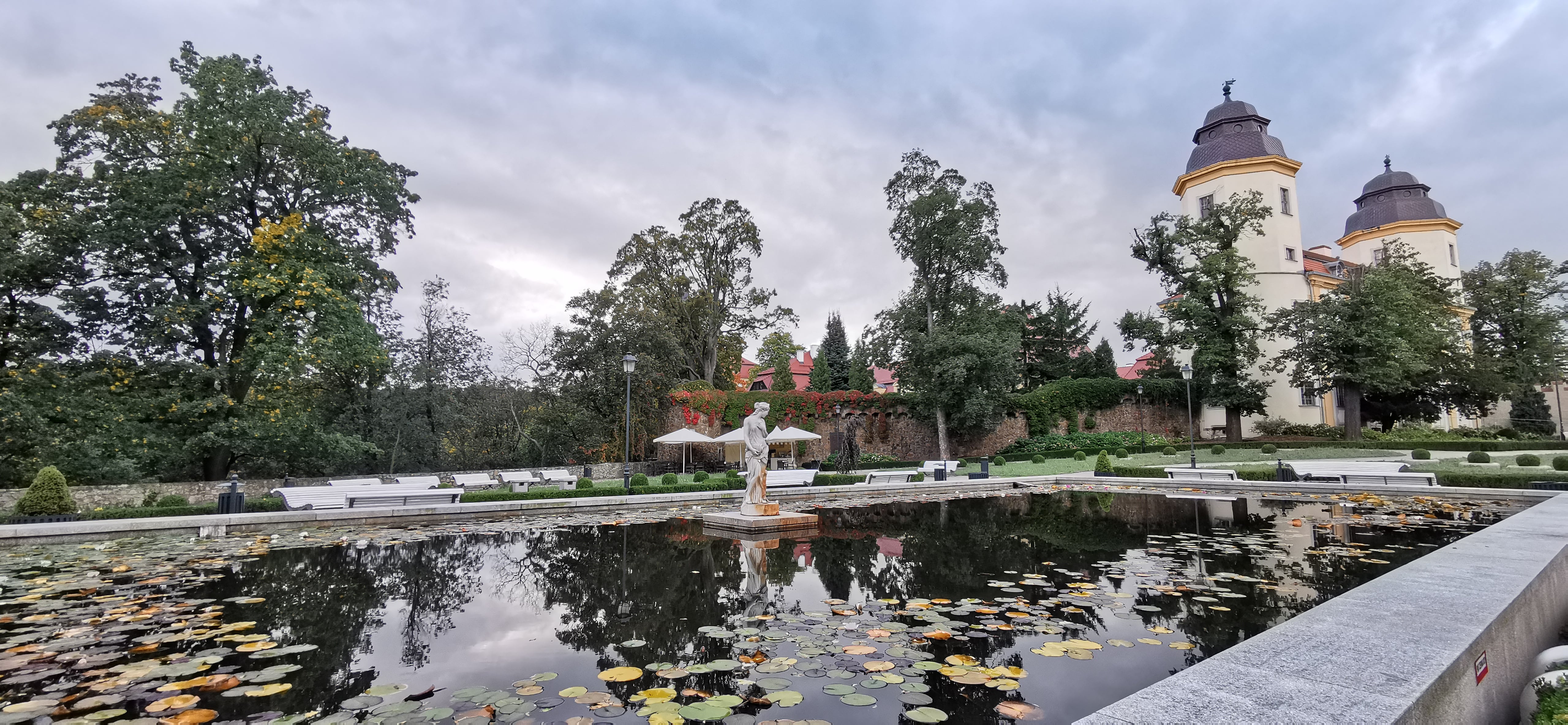
The castle has a rich and stormy history, which started in the 13th century. It changed owners quite often; it belonged to various states and much was destroyed during the wars. From the 16th century the castle belonged to the powerful Hochberg family, for about 4 centuries and during this time the castle was visited by lots of VIP’s like royalty, tsars, presidents and magnates (if walls could talk). Now there is so much to talk about its history, like the family Hochberg falling into debts and opening the castle for public or about the time the Third Reich took over the castle. I suggest you visit the website to read all about the castle: or better go and visit! The castle is now owned by the Walbrzych district government (since 1991).
A handsome young and English-speaking man awaits us (and I believe he is in shock when seeing only women). He guides us through Książ Castle with its many, many rooms. He talks about the renovation works that are being done in the castle, which has now covered 4 floors and there is so much more work to be done. The interior of the castle is impressive and well-kept and when looking out of the windows, I see beautiful gardens. He tells us juicy stories about the last family that lived here and of course he has stories about what took place here during the 2nd World War. Another very interesting tour, which unfortunately comes to an end.
The castle is a true tourist attraction and because of its location it is also known as the Pearl of Lower Silesia. I could easily spend a few days here, just taking photographs; both the castle and its location are very photogenic. The castle does house a hotel with restaurant and you can even get married in the castle; lots of wedding parties are organized here. The hotel is located in three outbuildings, but I would love to stay in the castle itself (which is not possible of course), although I am sure I would not be able to sleep with ghosts from the past probably haunting the place. At the end of the afternoon, we walk back to the bus, as I keep taking photographs with the sun going down peacefully.
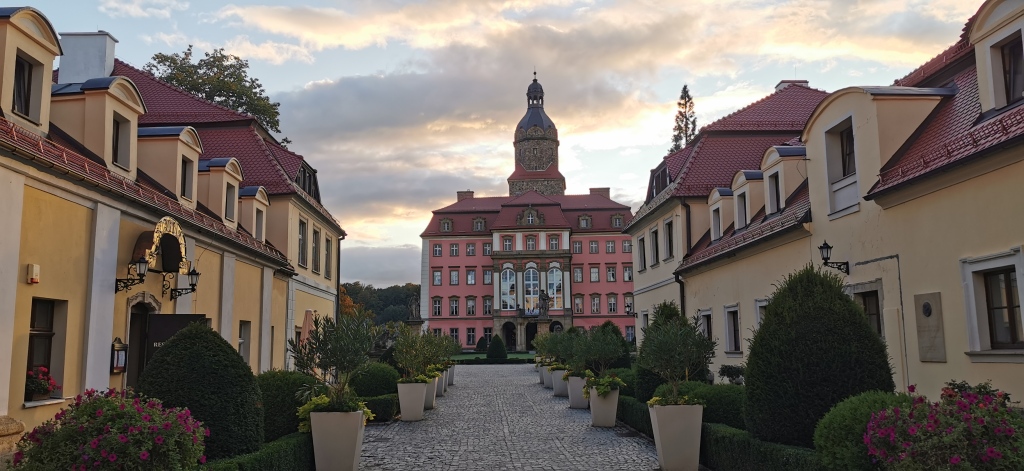
We have one more place to visit and that is the Peace Church in Swidnica, which we reach after about a 25 minutes’ drive. We are a bit late, so we hurry; it is already getting dark. The Peace Church is on the UNESCO World Heritage List. It is one of the largest timber-framed religious buildings in Europe, built in the mid-17th century. It does not look like a church on the outside, so I am curious what awaits us on the inside.

Once we are inside, the richly decorated interior is one big surprise; I simply do not know where to look. Everything we see is made of wood. We sit down in the benches and through a loud speaker comes an audio tour and Monika helps to point out the highlights being mentioned. The church is a mix of Baroque art and Lutheran theology, simply amazing. The Peace Church bears testimony to the quest for religious freedom. We need to leave, it is late. I wait for everybody to leave the church and I quickly take some photographs of this beautiful and special Church when no one else is inside.
From the Peach Church we walk through the centre of Swidnica to restaurant Rynek for dinner. We get served beef in a rich sauce, together with potatoes, a salad and cheesecake for dessert. What an impressive day today, we have seen and learned so much. We have a lot to take in! But how great is it to combine a city trip to Wroclaw with a day trip to this part of the region. We walk back to our bus, admiring Swidnica by night. Our driver takes us back to the hotel in about 90 minutes and most of us fall asleep on the bus…
Day 4: more of the city: architecture, music and market
After a good night sleep, we have another full day in Wroclaw ahead of us. This morning we were supposed to go on a boat tour, but the water level in the river Oder is too high, so boats are not allowed to go out! That means a change of plans and after breakfast we are picked up by 2 mini e-vans, who will take us on a city tour. The e-vans are small and can manoeuvre easily through the city! We put our mouth caps on, open the windows, the sun is shining and off we go…

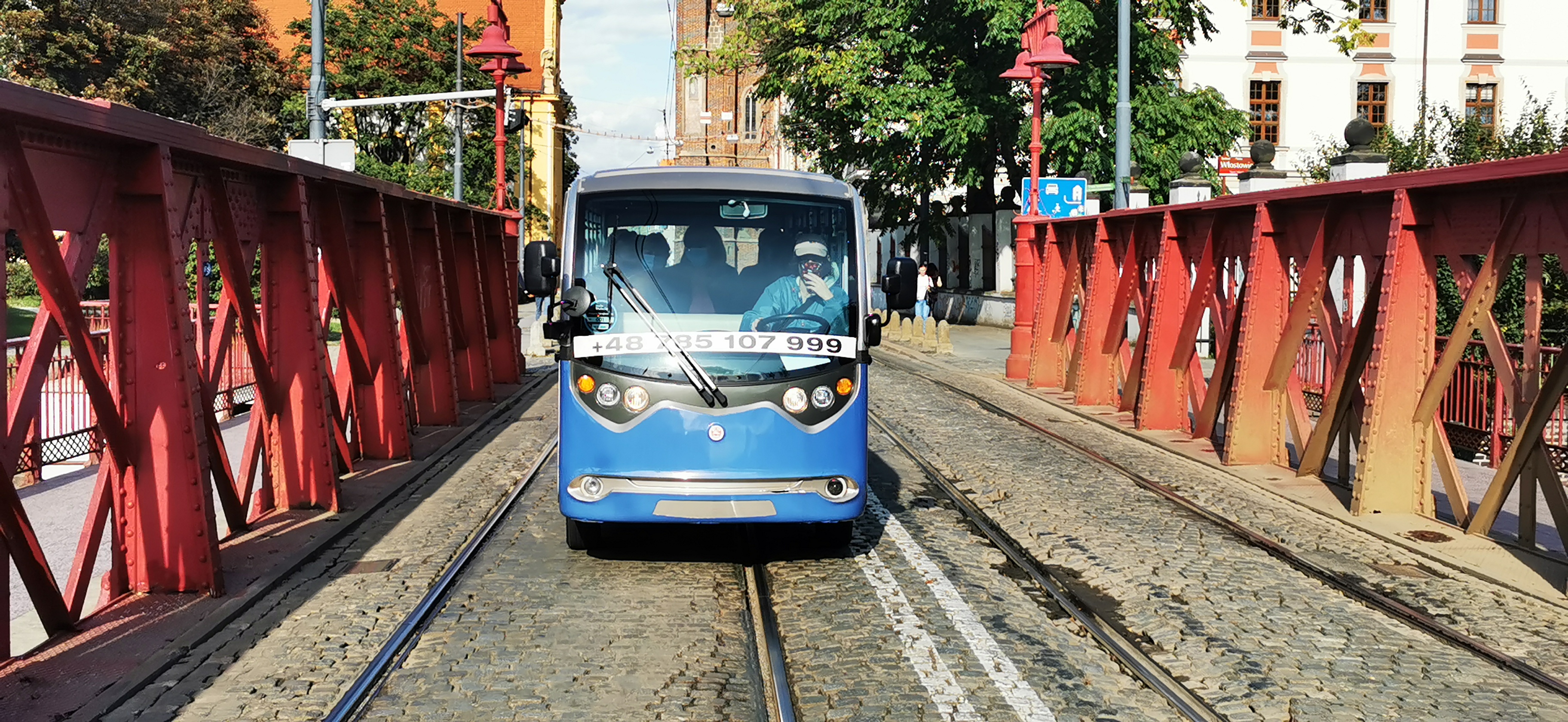
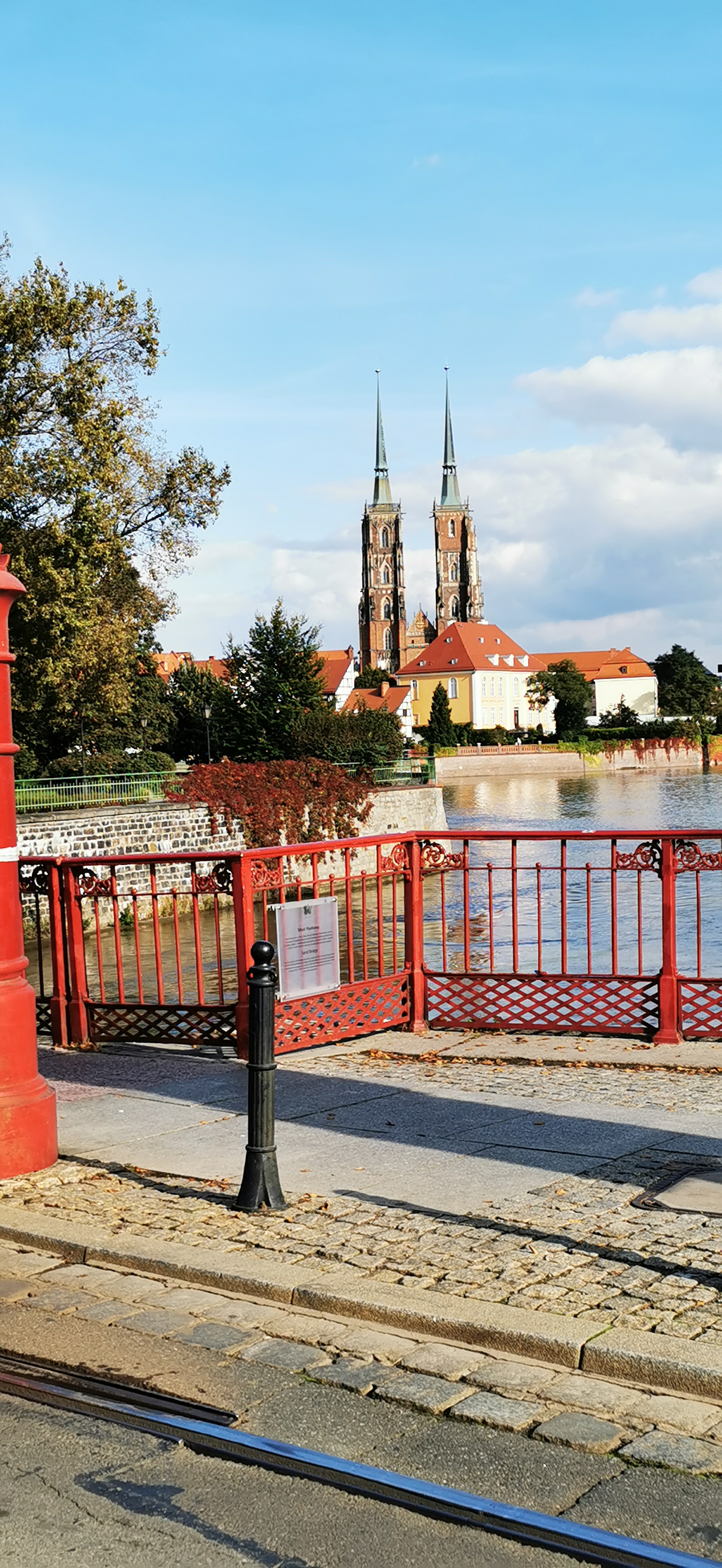
Our first stop today is at Centennial Hall (Hala Stulecia); we saw the building when visiting Wroclaw Zoo 2 days ago, which is located on the other side of the road. We get a quick tour inside the building, which reminds me a little bit of the Pantheon in Rome. Centennial Hall opened its doors in 1913 and for more than 100 years, this building had the largest dome in the world without pillars. Centennial Hall is a multifunctional space and one of the most wanted places to organise exhibitions, conferences, congresses, cultural and sporting events for Poland and from abroad. Since 2006 the Hall became a part of UNESCO World Heritage List, making it even more interesting.
We hurry outside, so that we are on time to see the fountain show in the garden, located behind the hall. OK… this fountain show may not be like the fountain show at the Bellagio ;), but it is worth it! The large pond in which the fountains are located is surrounded by a beautiful pergola / arch, which displays its autumn colours and I end up taking photographs from every angle. After the fountain show we visit the Japanese garden, which is located behind the pergola. It is a lovely and peaceful spot and here also autumn shows its most beautiful side.
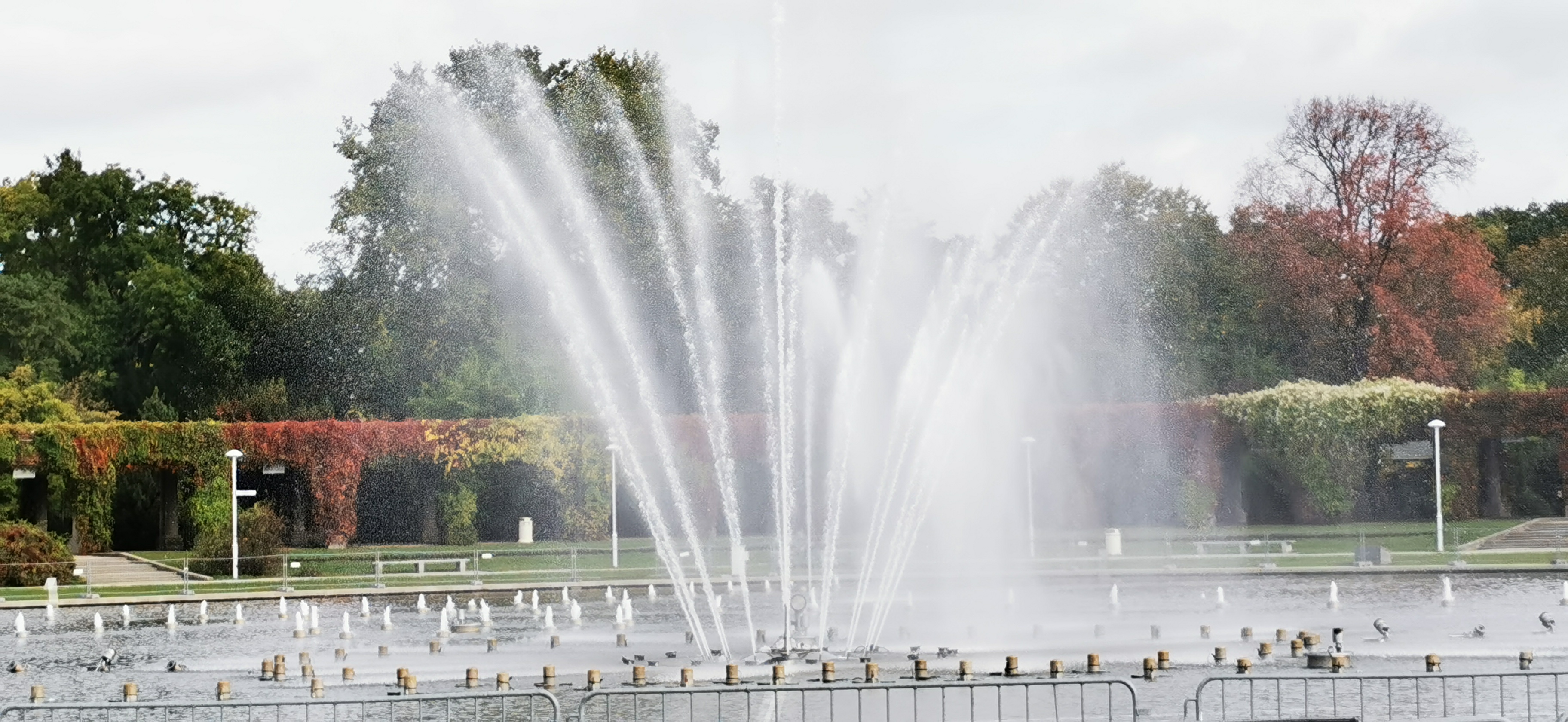




We have lunch at Concordia Design, a multifunctional building. We arrive a bit late, due to a traffic jam on one of the bridges. Concordia Design contains co-working spaces, an event venue, a food hall, a café and a rooftop terrace on Slodowa Island. Upon arrival a friendly lady named Ewa Kaucz, is waiting for us. She is the managing director and takes us on a small tour before going to the rooftop terrace, from where the view over the city is wonderful. The building has a good atmosphere and I can see why this is a popular place to visit.
We go back downstairs to relax and enjoy another delicious lunch! First a vegan cream soup, then a bowl with teriyaki mackerel and wakame salad, accompanied by a good glass of white wine and last but not least: we are treated to a cinnamon bun. We better do some walking this afternoon!
After lunch we visit the National Forum of Music (Narodowe Forum Muzyki or NFM), the most important music venue of Wroclaw. The building looks amazing, the front is made of wood and symbolizes the wooden sound boxes of the string instruments of the orchestra. The front porch is in copper colour, symbolizing the brass instruments and the balustrades in the reception hall are white and reflect in the black rear wall, symbolizing keyboard instruments.
The NFM was completed in 2015, houses a large concert hall with 1800 seats and also has 3 chamber halls (from 250-450 seats). We get a tour through this photogenic building, which is very quiet during the day. The NFM is home to many major ensembles and festivals in Wroclaw and it is one of the largest and most modern music venues in Poland. At this very moment Jordi Savall is rehearsing in the concert hall and we get to sneak in and watch for a while on the balcony. But I think he knows we are here, because they are not playing, just tuning. Still, it wonderful to see this big concert hall and the light shining over the orchestra. We leave the NFM and once we are outside, we have to take a photograph of the dwarf orchestra 🙂 located at left side at the front.

We have a few hours to ourselves to enjoy the city and since the sun is still shining, we walk! Little groups go into various directions and I am part of a small group that wants to visit the old market hall (Hala Targowa). It is a 20 minutes’ walk and again we see more of the city and more dwarfs! The market hall is still used for daily shopping and I love markets like these. I love the colours; I love the smells and I love to see foreign products. Many local suppliers here sell their goods.




We walk back to the hotel, passing the Maria Magdalene church. There is a small souvenir shop inside and we go in to have a look. Once we are inside, we see that here we can buy a ticket to visit the Penitent Bridge (Mostek Pokutnic, also known as the witches’ bridge). It is a footbridge between the 2 towers of the church, at 45 metres high! We still have time before it closes, but not all of us want to climb 247 stairs. I actually do not want to either, but after that lunch I think I have to! Halfway the winding stairs I am already out of breath, but I keep on going and the 360 view on top of the bridge is worth it. The sun is low, but still shining enough light over the city. I photograph the witches on the bridge and if you want to know about them, just click here.
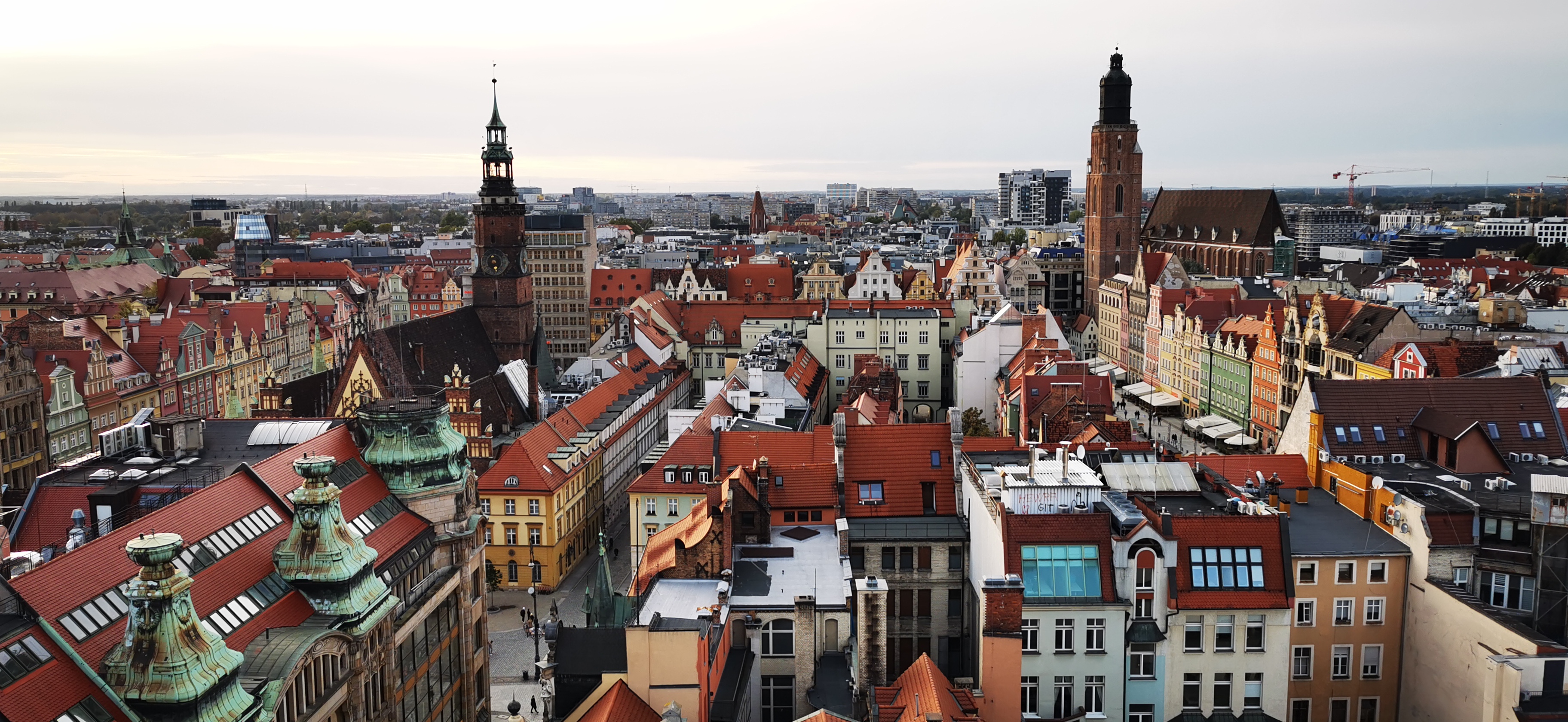

Back at the hotel we quickly freshen up, change clothes and walk back to city centre for our last evening meal in Wroclaw. We have dinner in a traditional restaurant called Pod Fredra, where it is warm and cosy. We get served almost every traditional Polish meal there is on the menu, so we make sure we try a bit of everything and we can hardly come out of our seats after dinner. It is a good thing we have to walk back, although it is only a short walk back to the hotel.
Day 5: departure day
The day of departure has arrived. We all get up early to enjoy a last delicious breakfast in our hotel. We will leave the hotel at noon to go back to the airport, so we still have time to go into town once more, to take some last photographs, buy more souvenirs and to spot more dwarfs. Even in streets where we walked several times this week, we find dwarfs that we did not notice before. I take a last look at the colourful houses and beautiful facades at The Market Square. This city turned out to be one big surprise; I love it here!
We walk back to the hotel, pack our luggage and are taken back to the modern airport of Wroclaw. Yesterday we already said goodbye to Monika, our wonderful guide and now we say goodbye to Wroclaw. We had a great educational trip; both tour operator De Jong Intra and the Polish Tourist Board gave us their all. We saw so much of the city and the surrounding area; this destination has a lot to offer for everyone (young, older, old… big or small budget)! History, art, culture, architecture and a huge range of food and beverage outlets and activities… you name it; Wroclaw has it! To all the ladies who were travelling with me: thank you for your good company, it was a pleasure to meet you all!

At the airport is not so busy, so many flights have been cancelled. After check in, we have a look at the departure hall, get a snack for lunch, before KLM flies us safely back to SchiphoI. It felt great to be in Wroclaw, to escape daily life especially in time of Covid-19. I know that it is wishful thinking, but I hope that soon our lives can go back to “normal”. Health should always come first, no matter what! So, whatever we need to do these coming months, we will do! But I hope that sometime next year, we are able to travel again, because there is still so much to explore and enjoy!
Travel Blog by Elisabeth, One Lucky Traveller
October 9, 2020
Do you want to know more about Wroclaw? Click here!

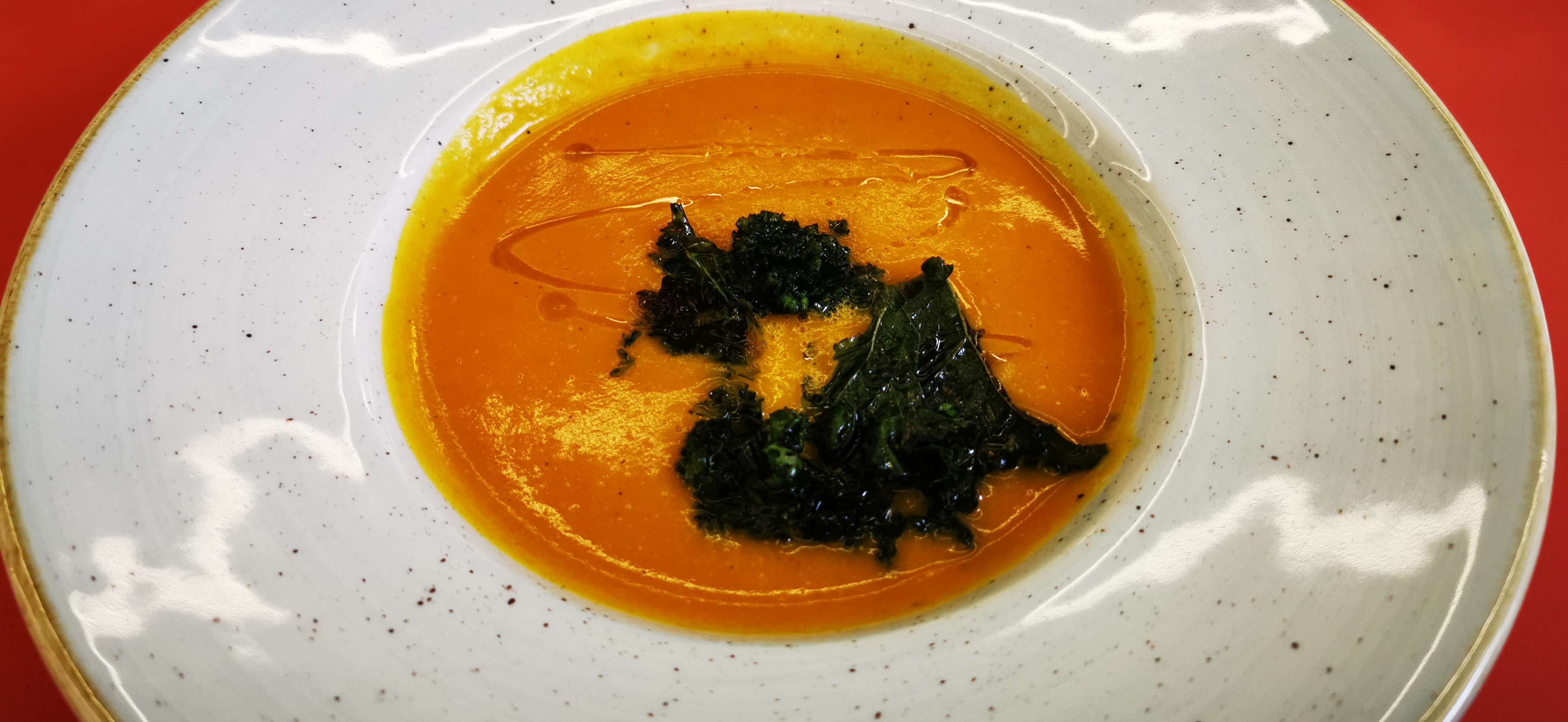

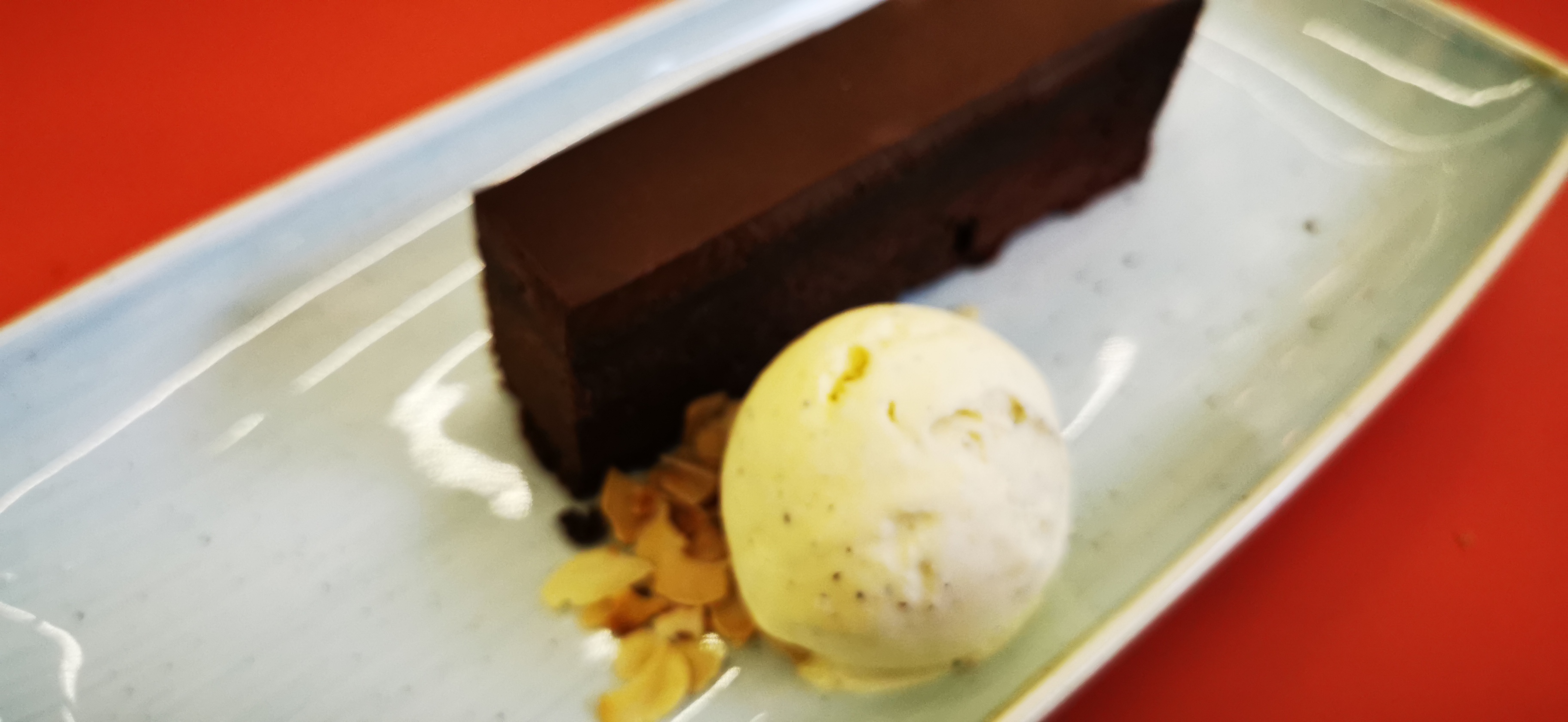


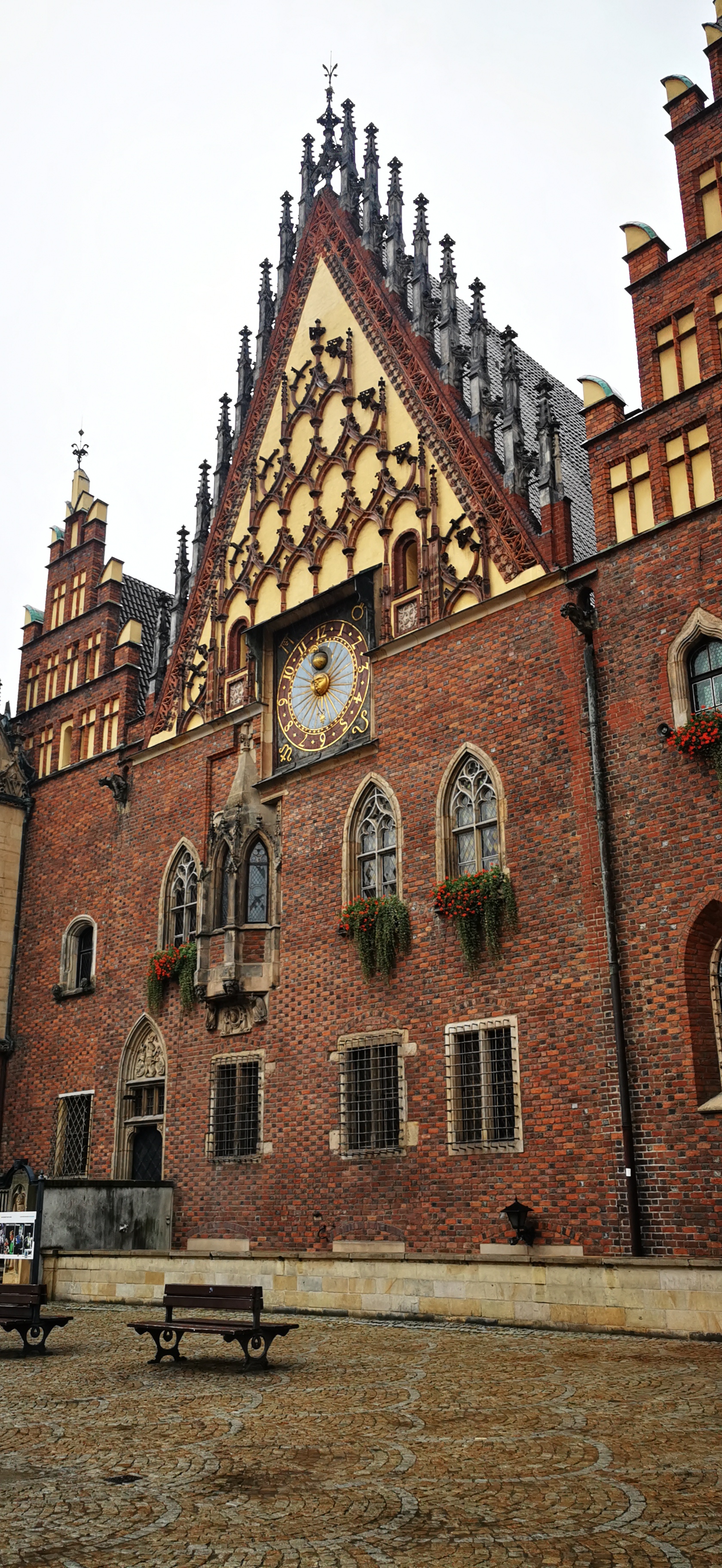




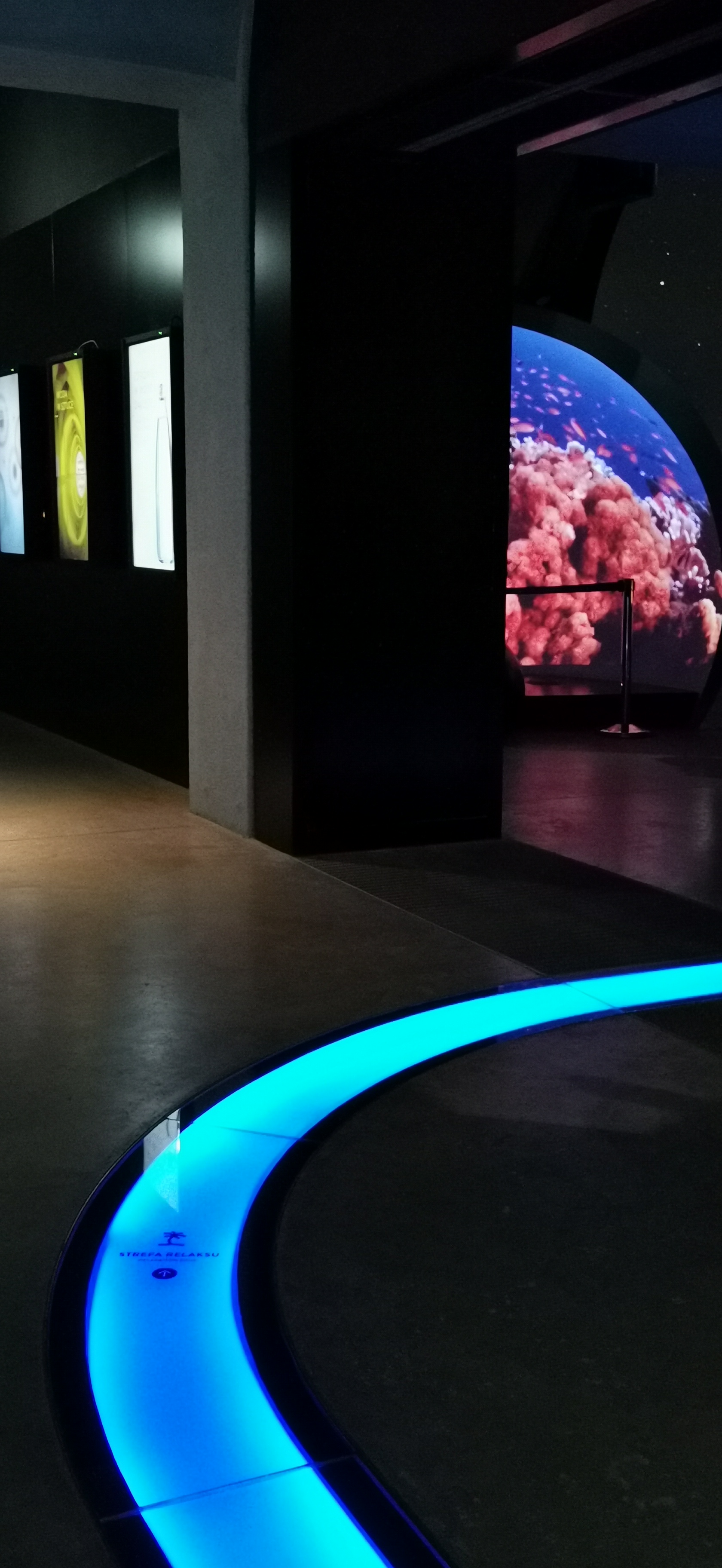





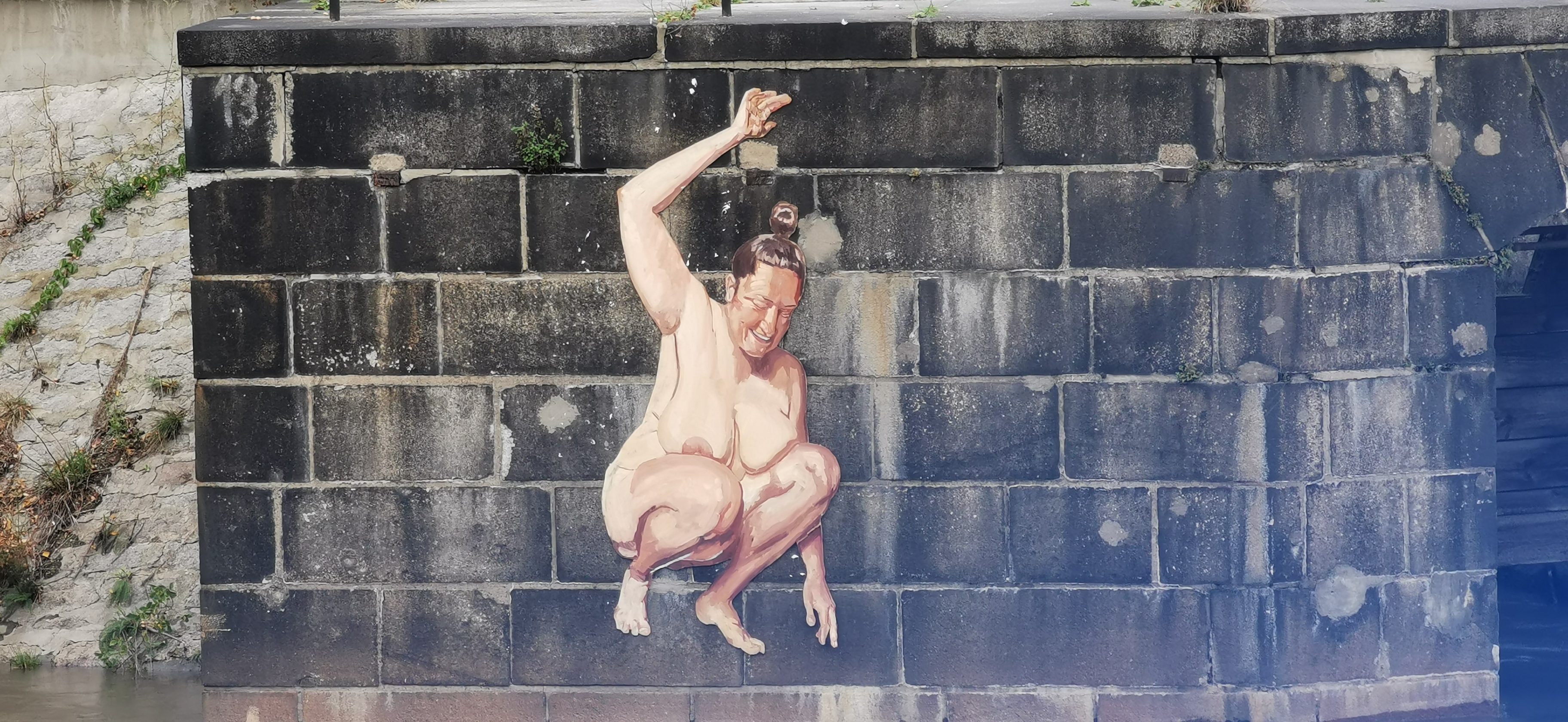


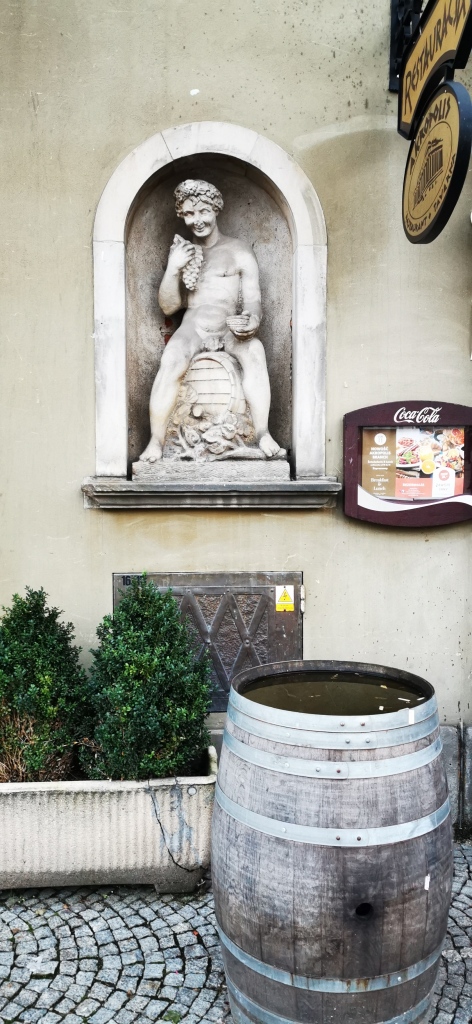


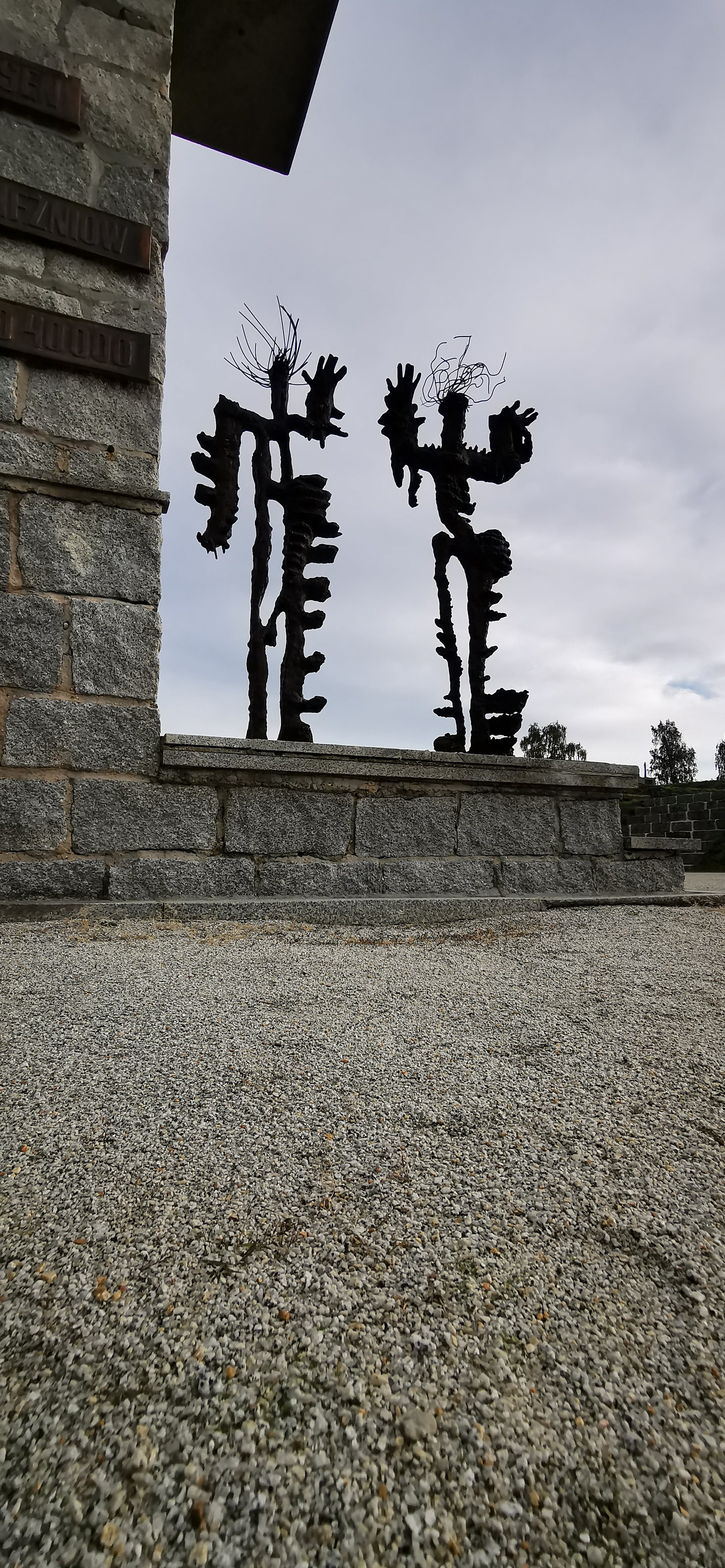
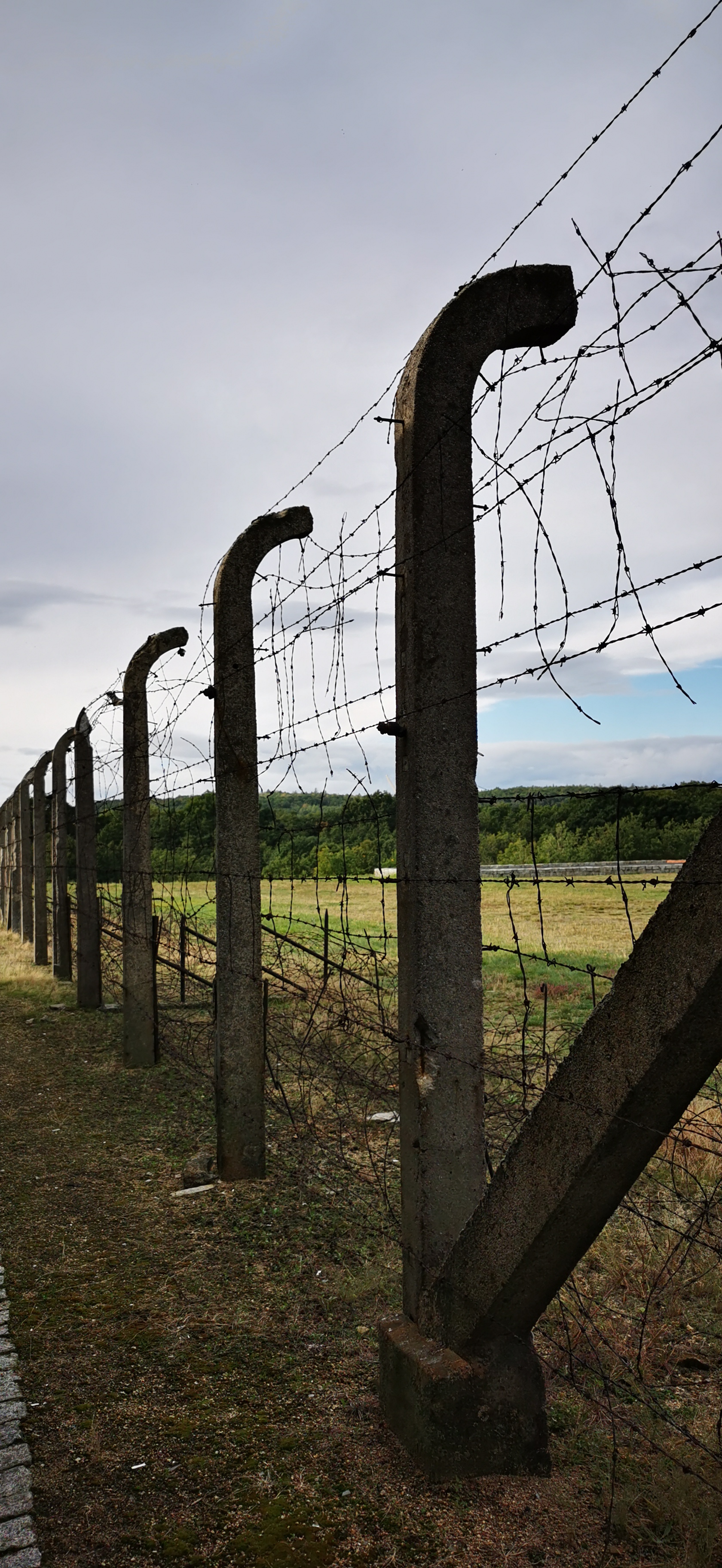




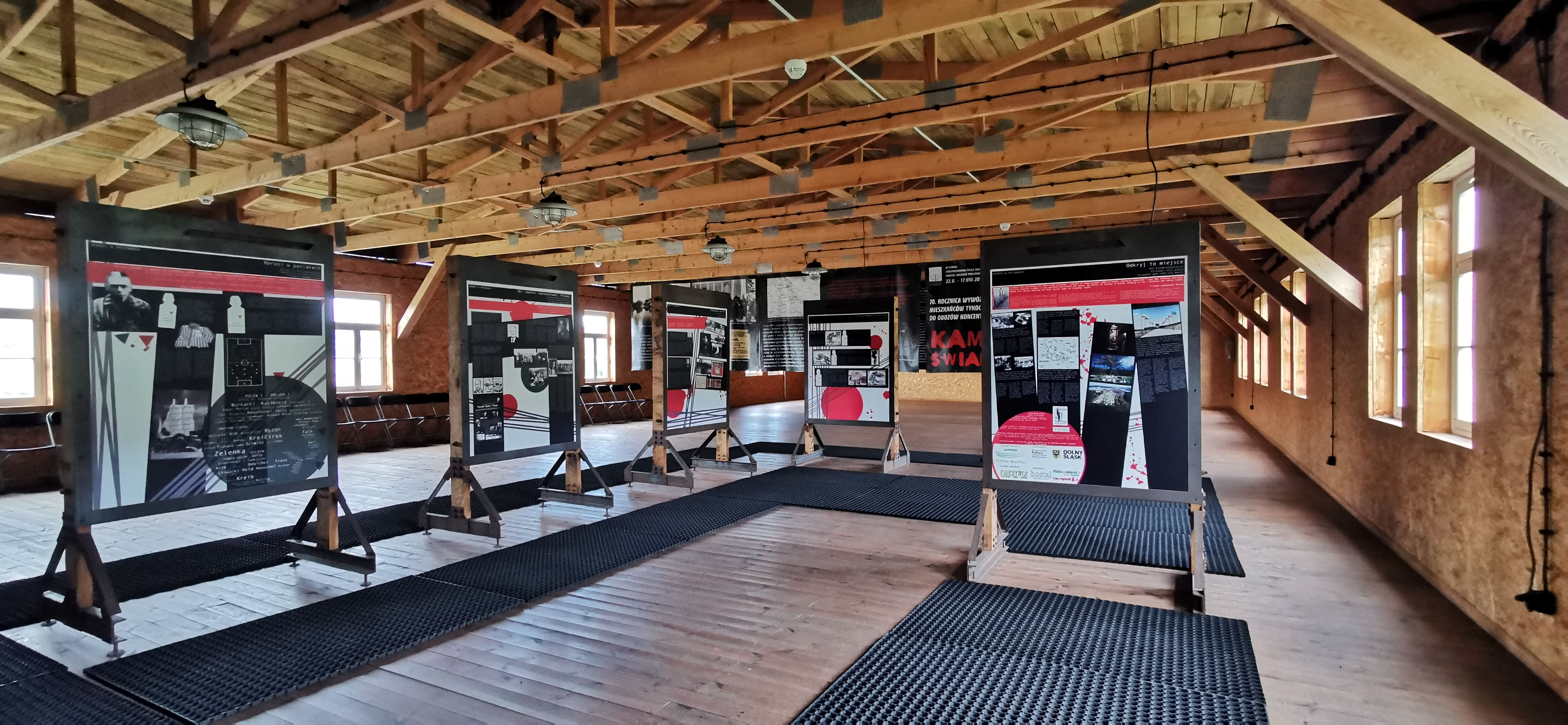
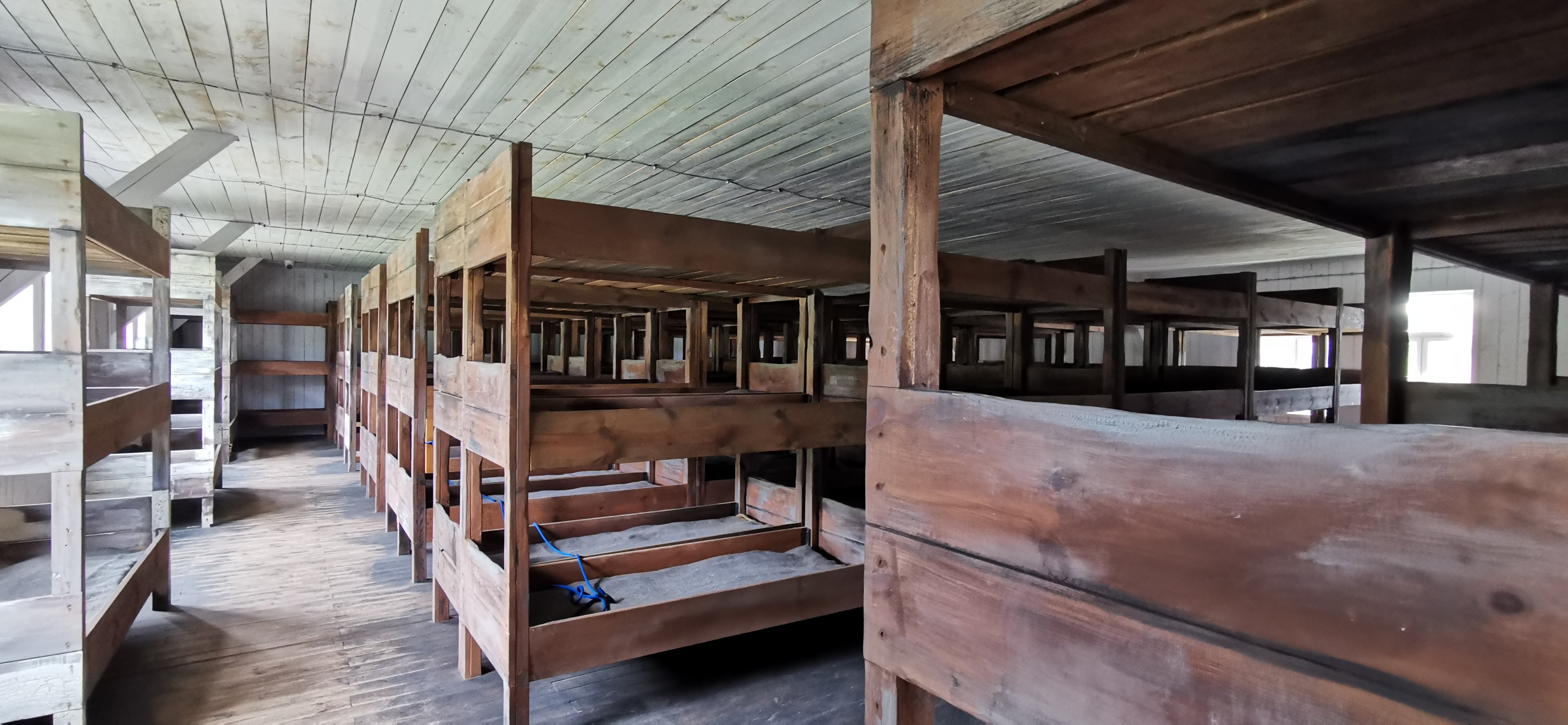


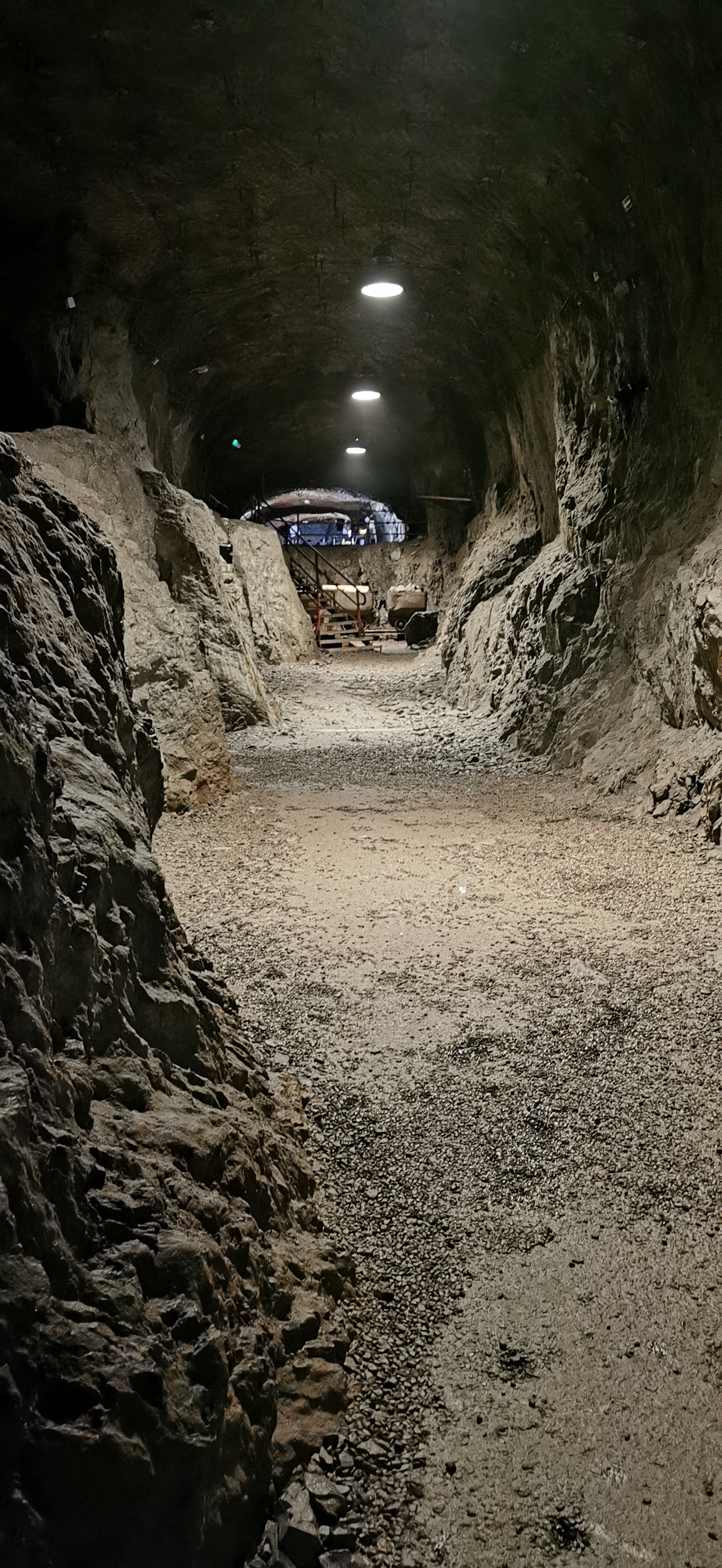

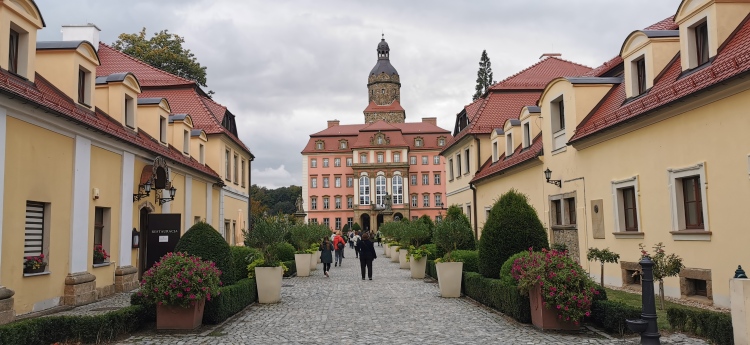

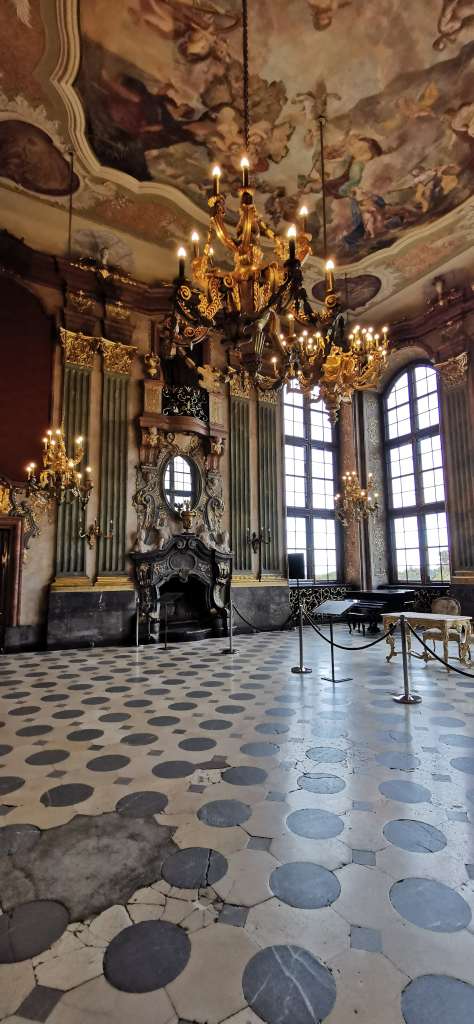

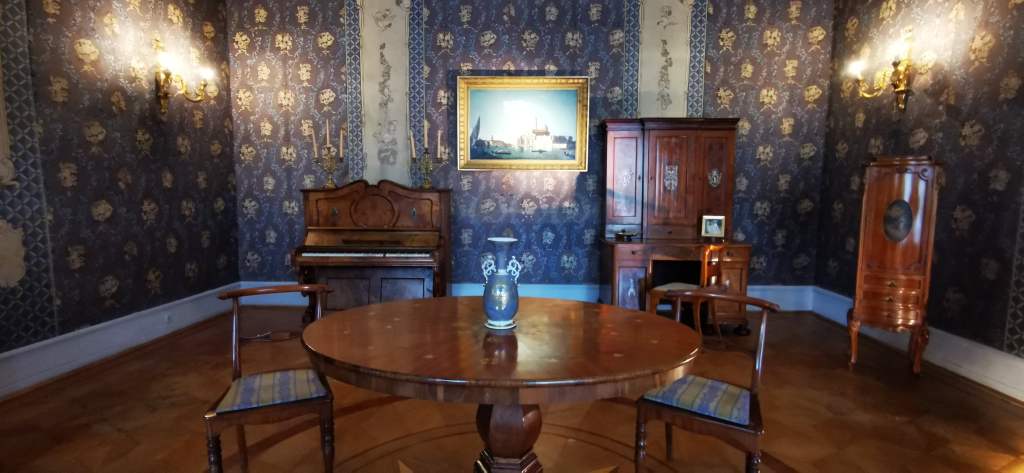


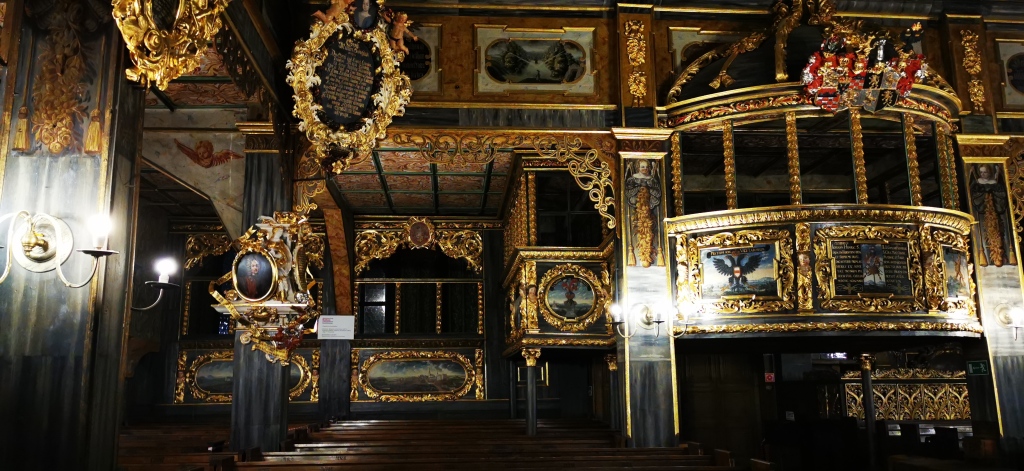





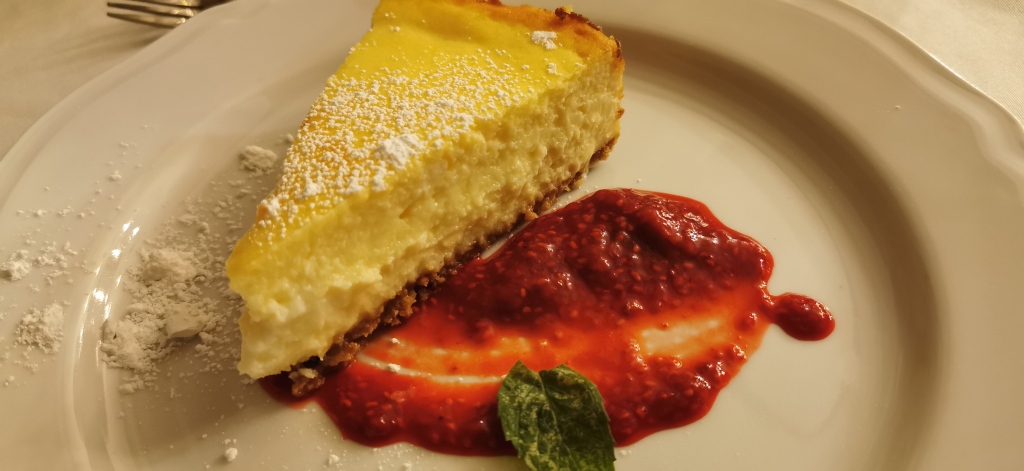

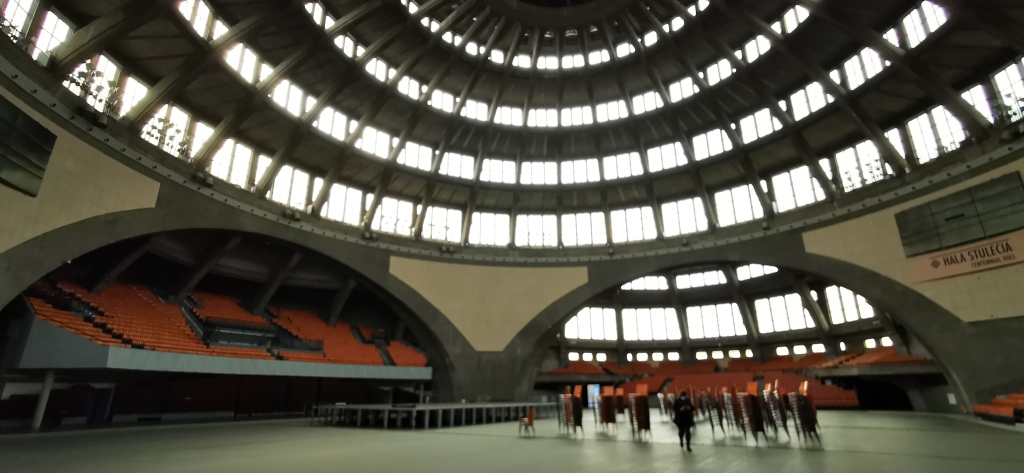
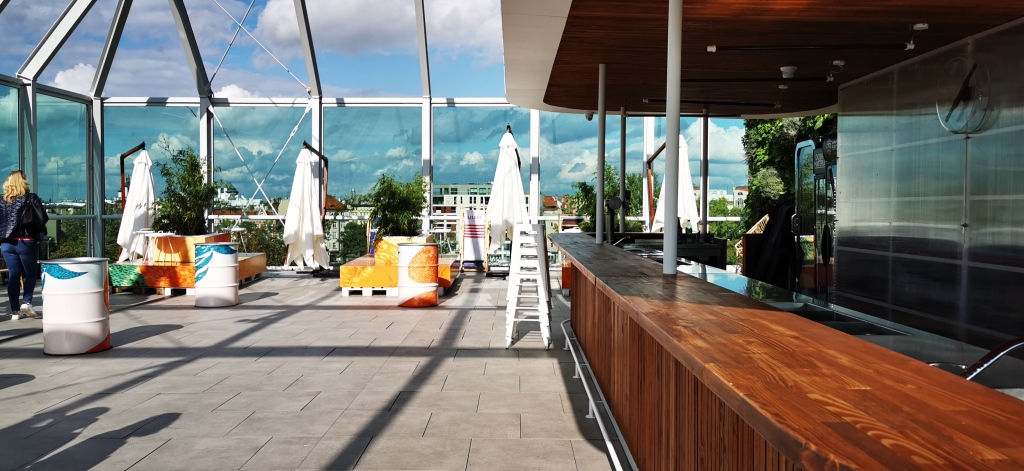

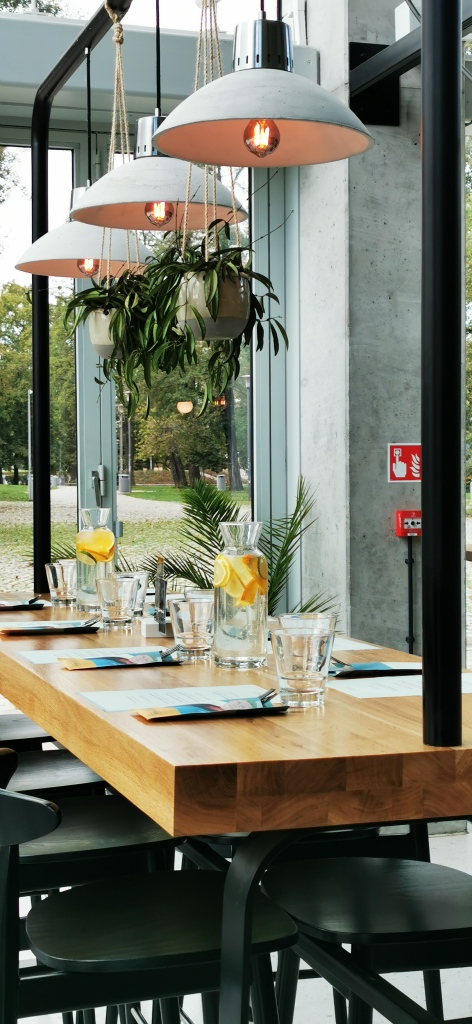


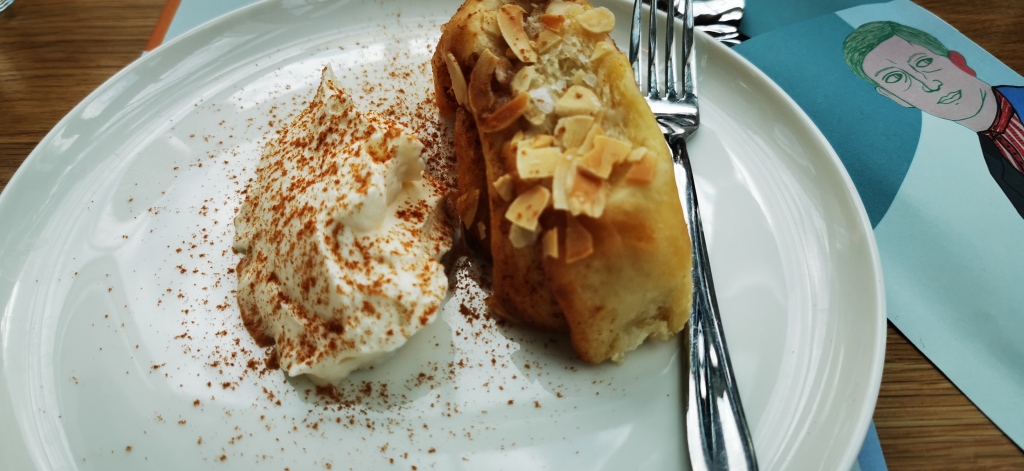






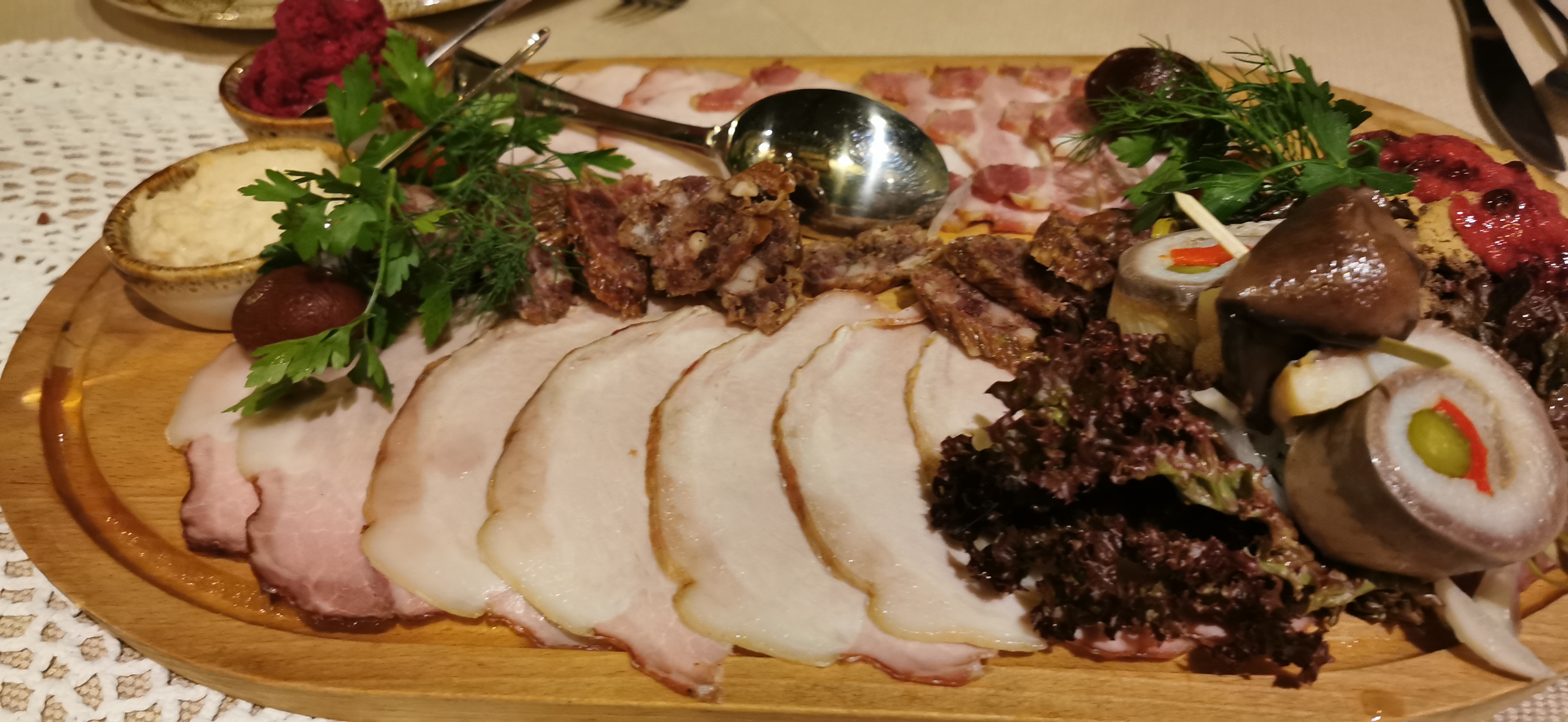
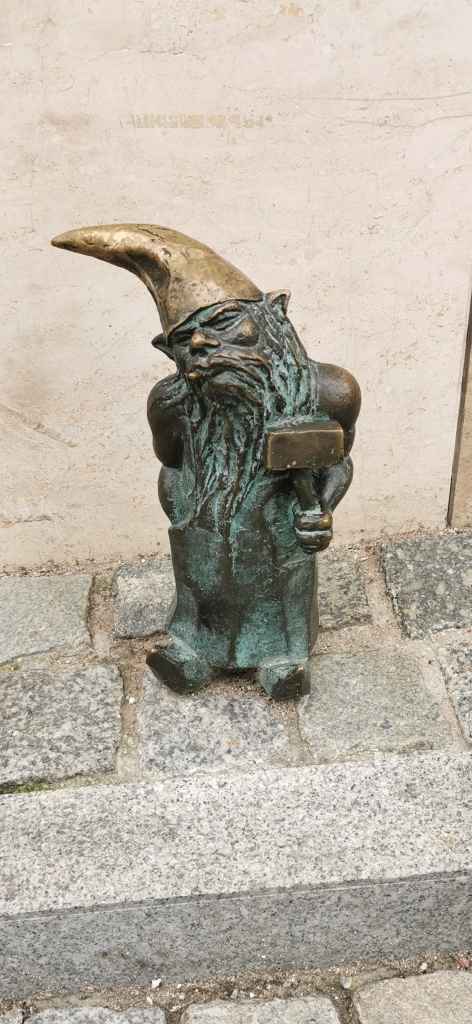


You must be logged in to post a comment.